
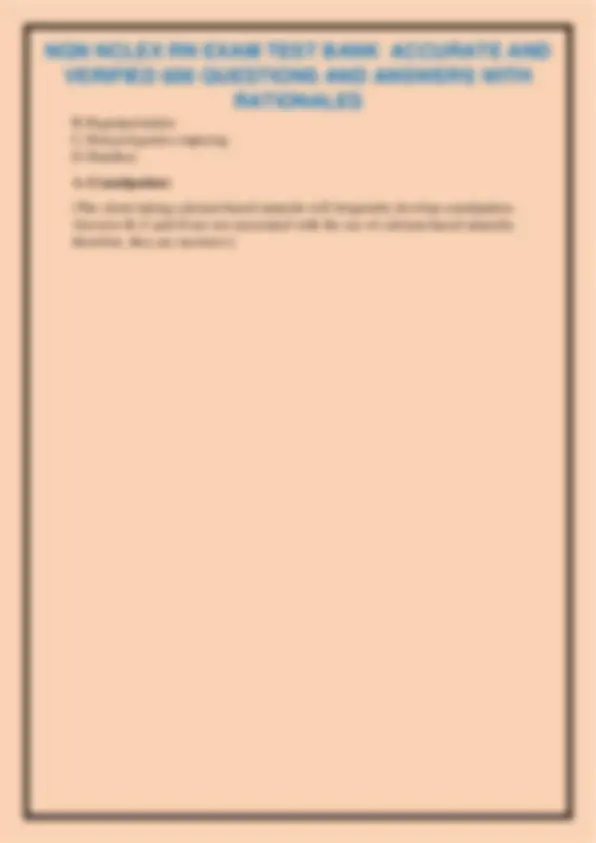
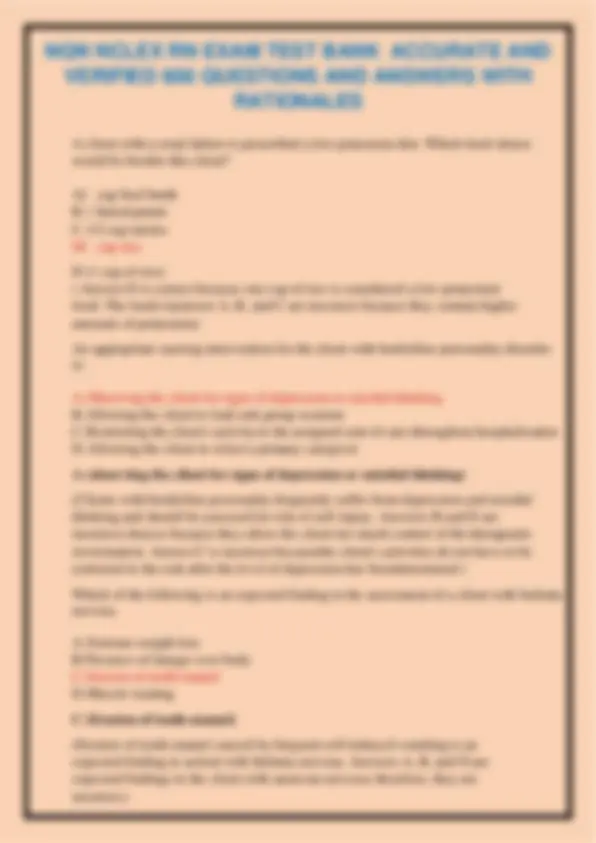
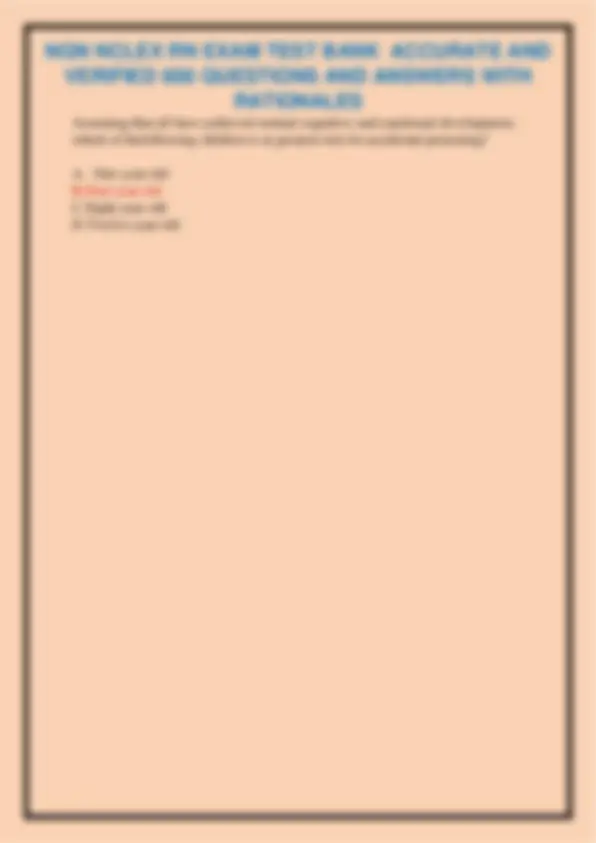
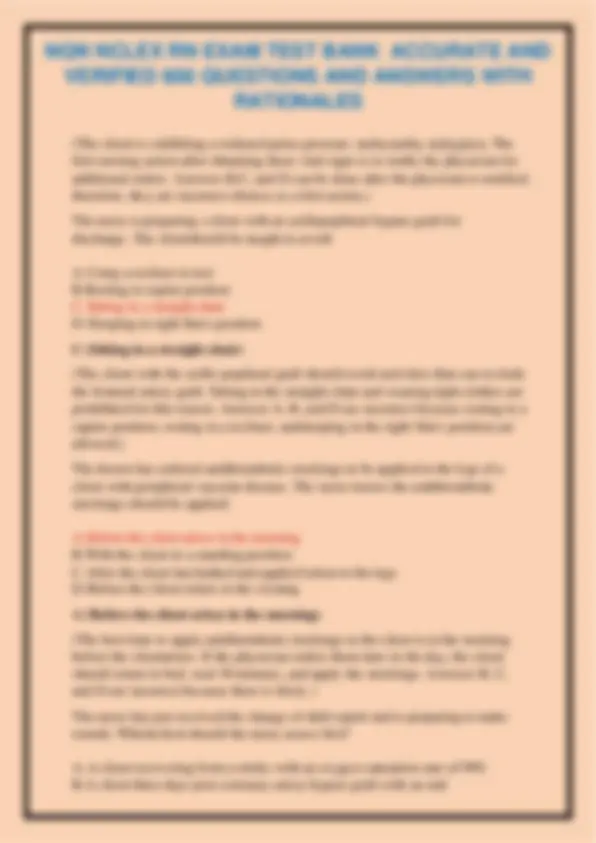
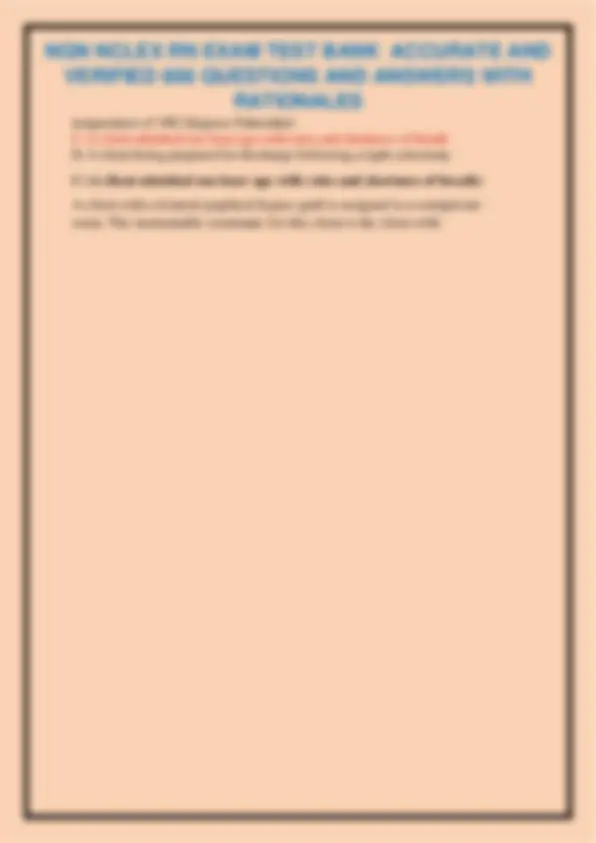

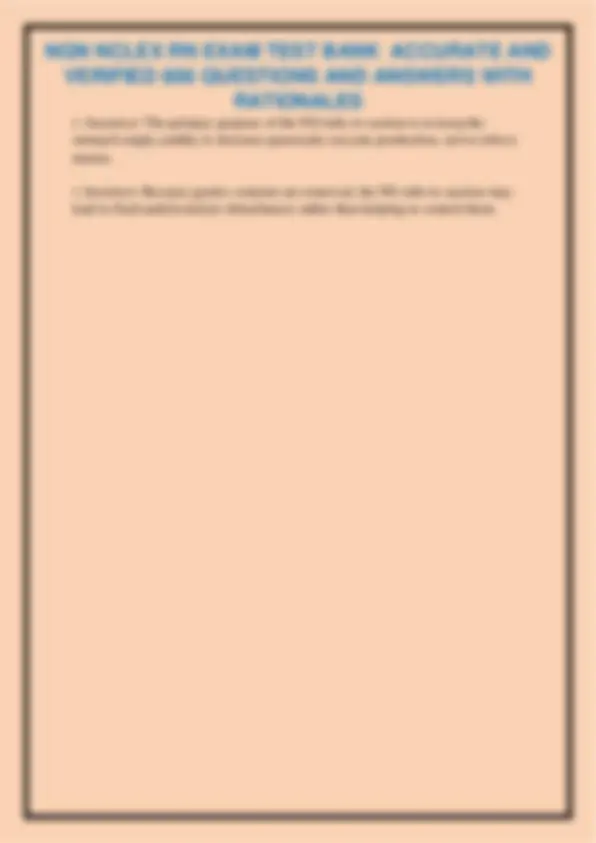
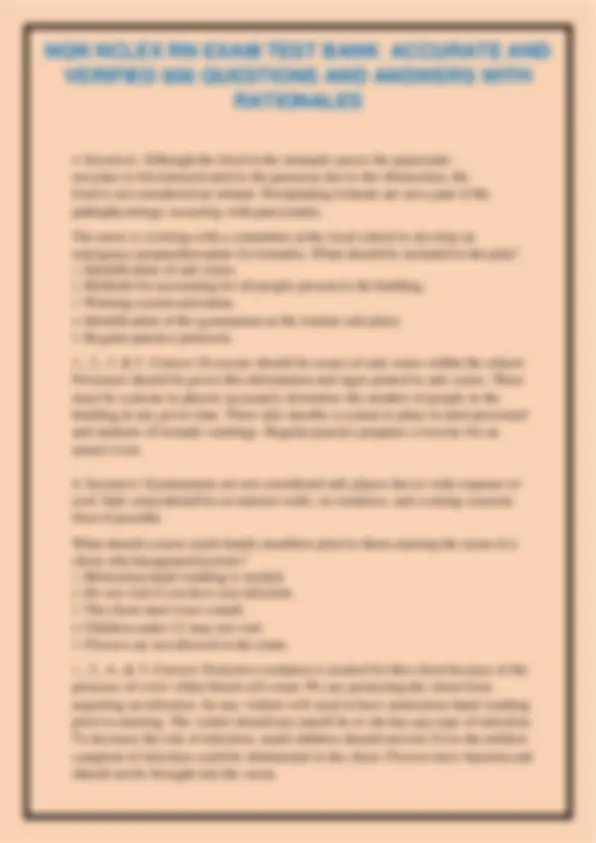
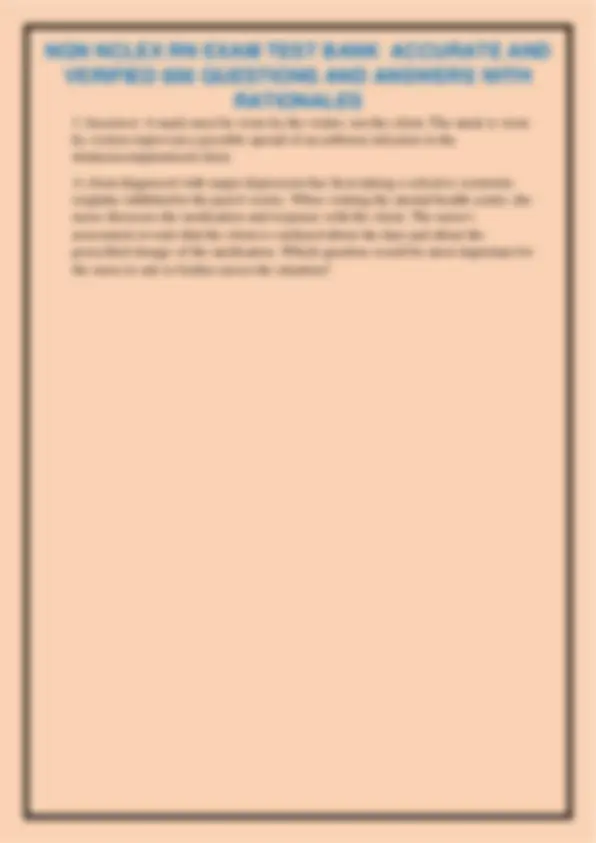
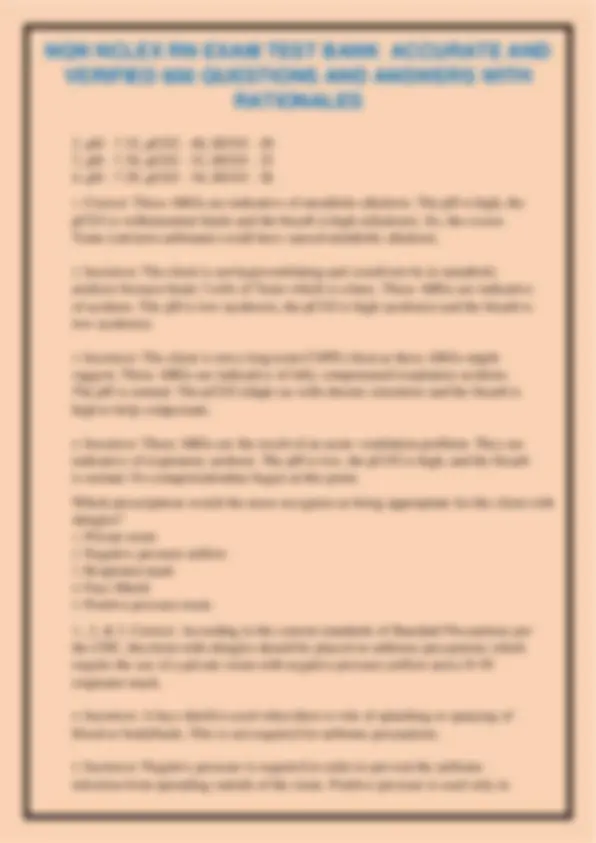
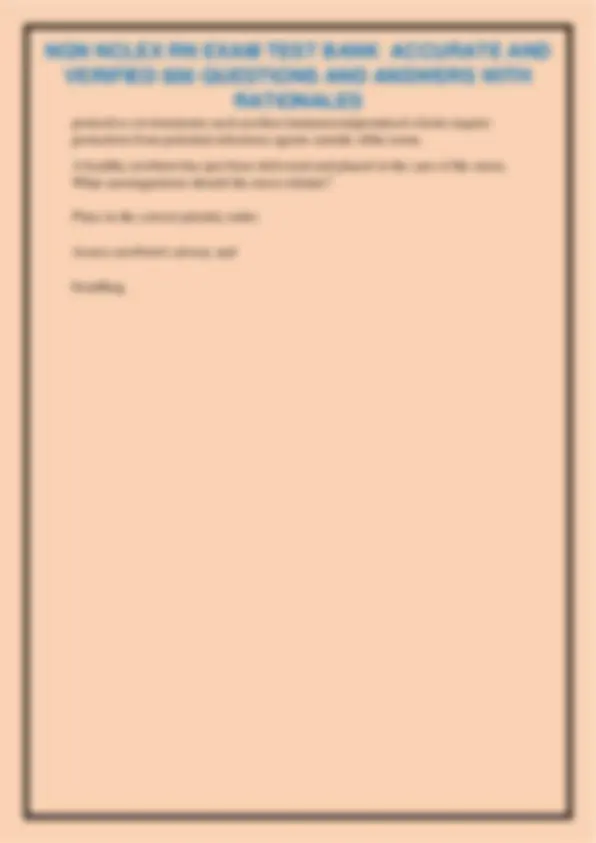
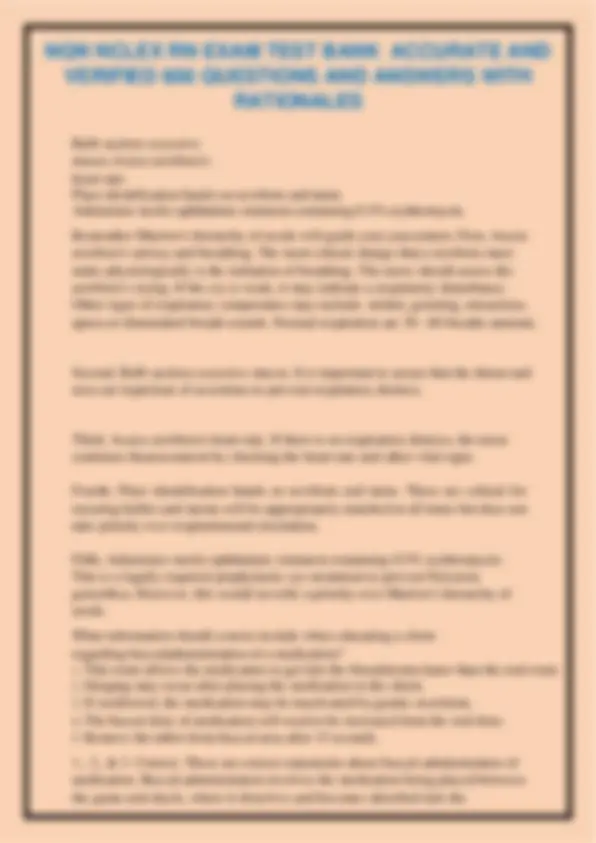
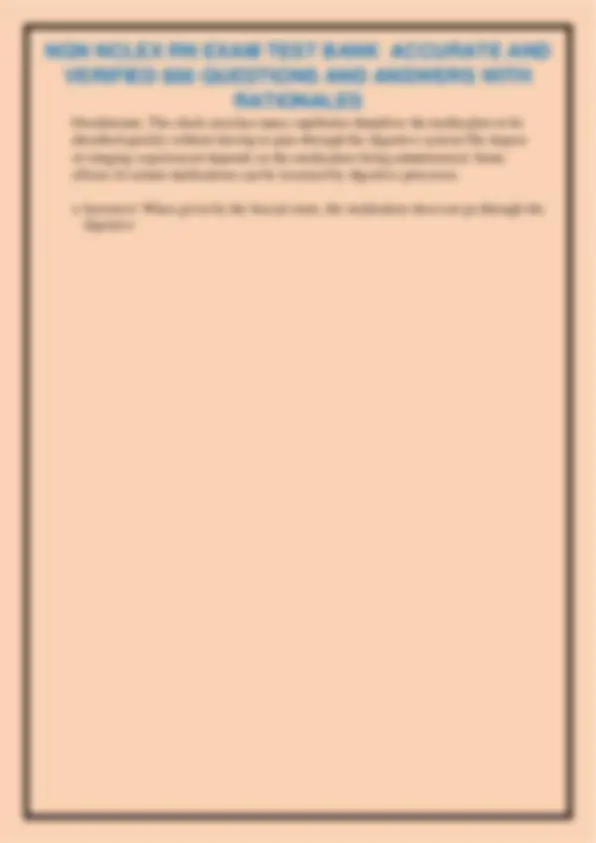
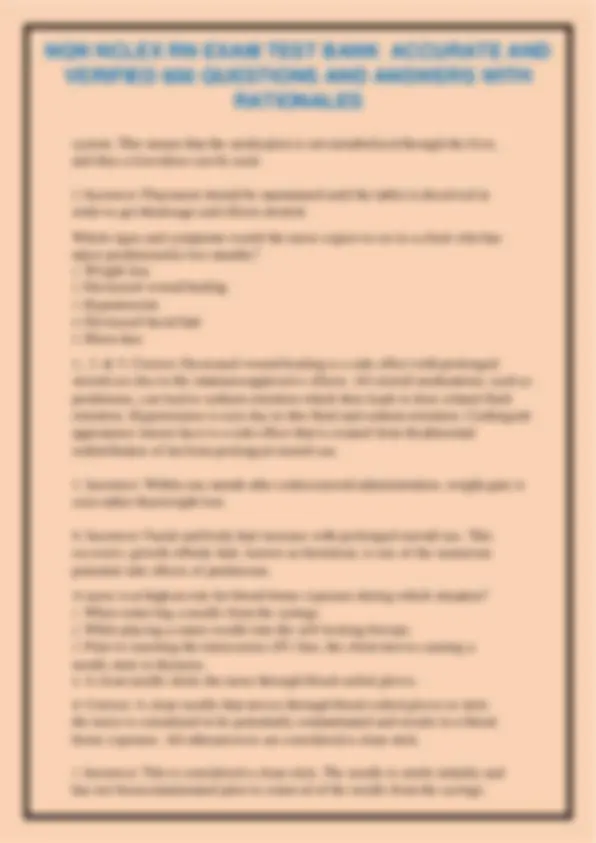
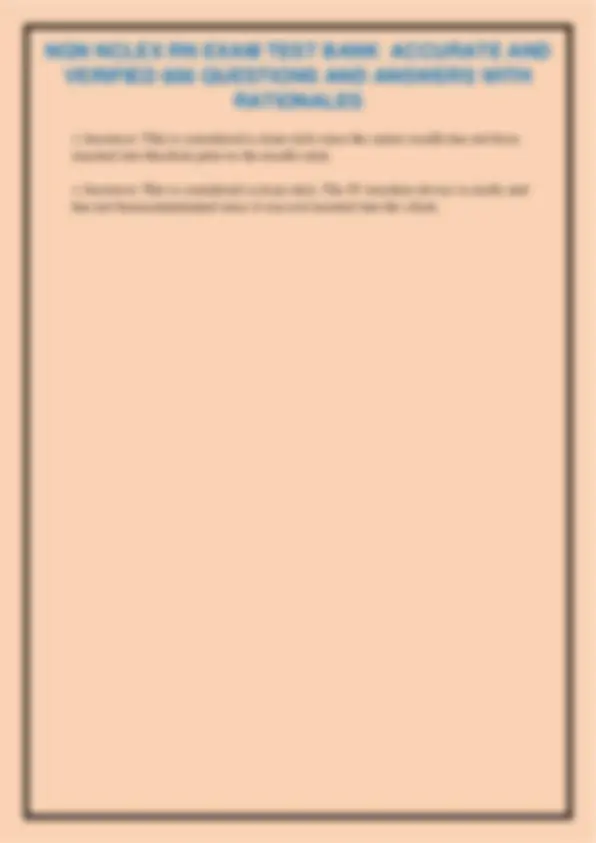
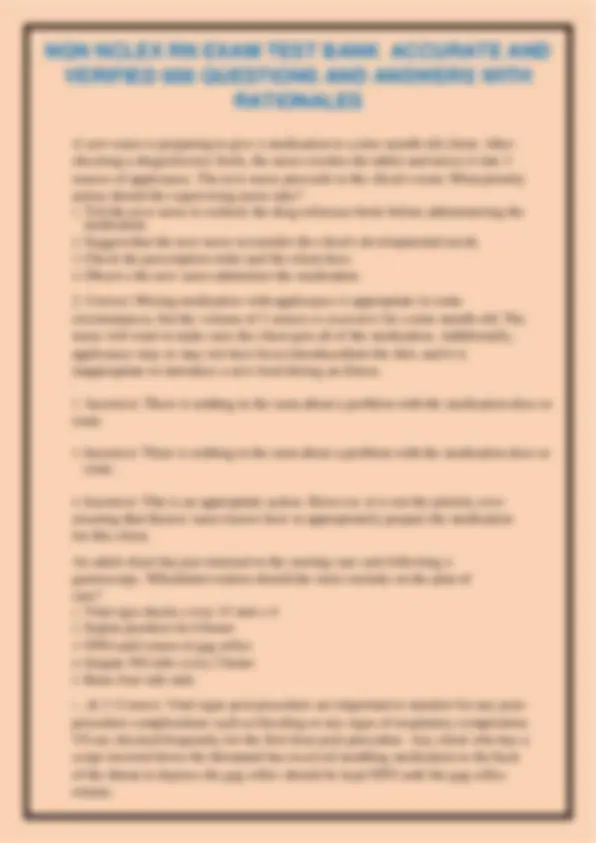
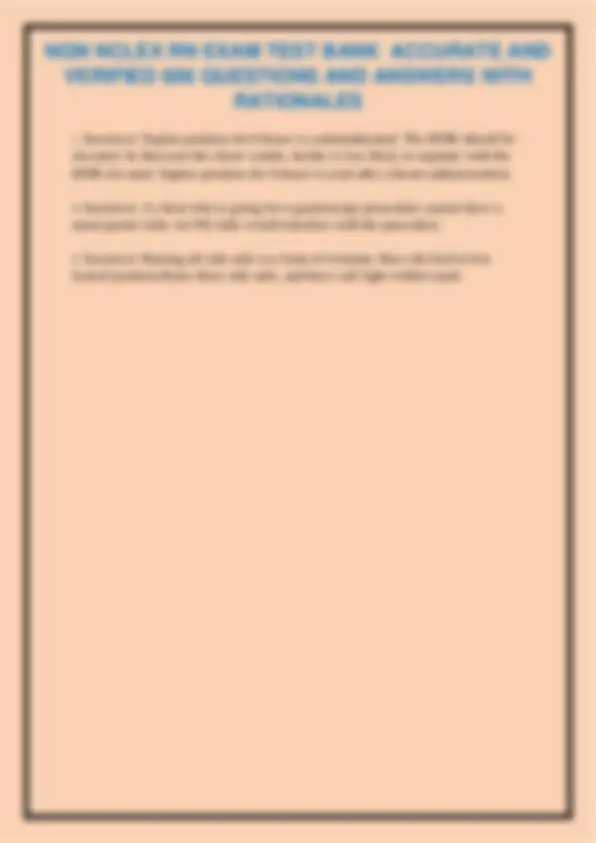
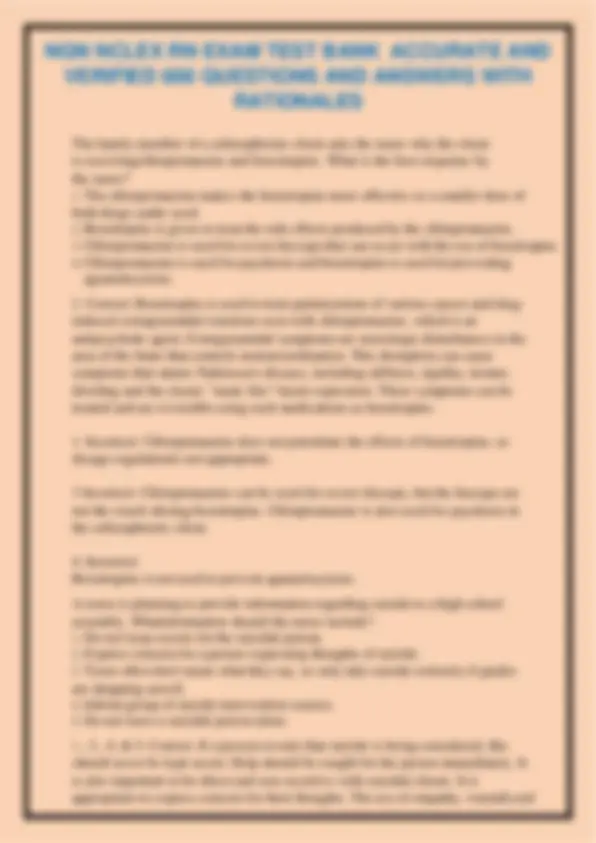
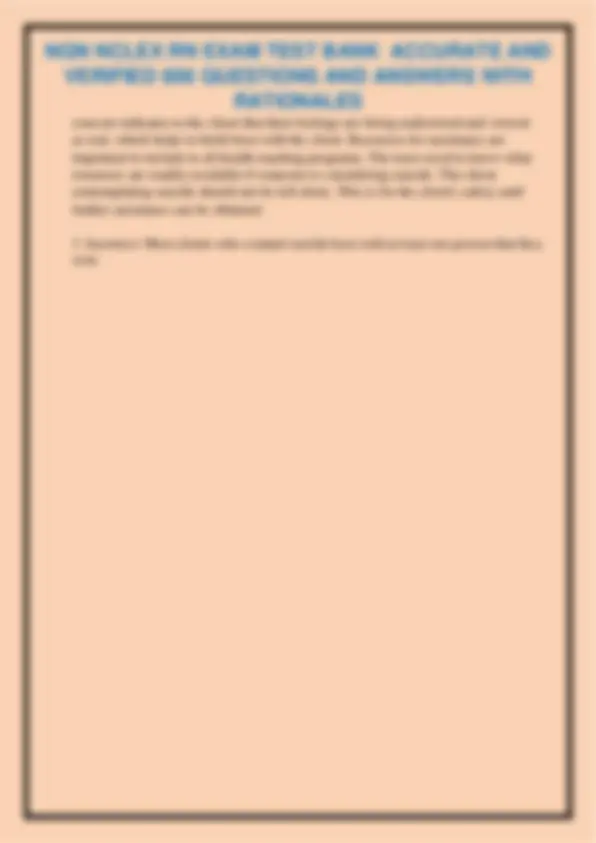

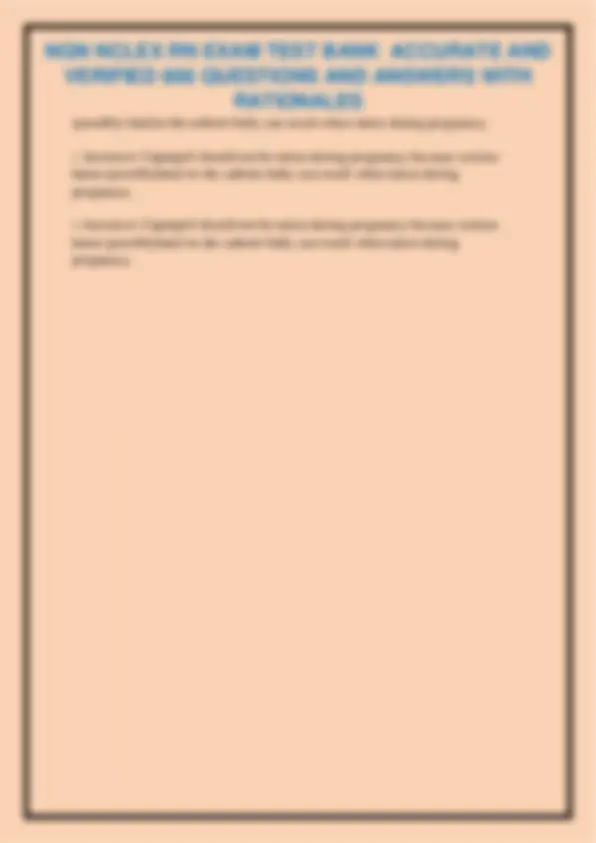
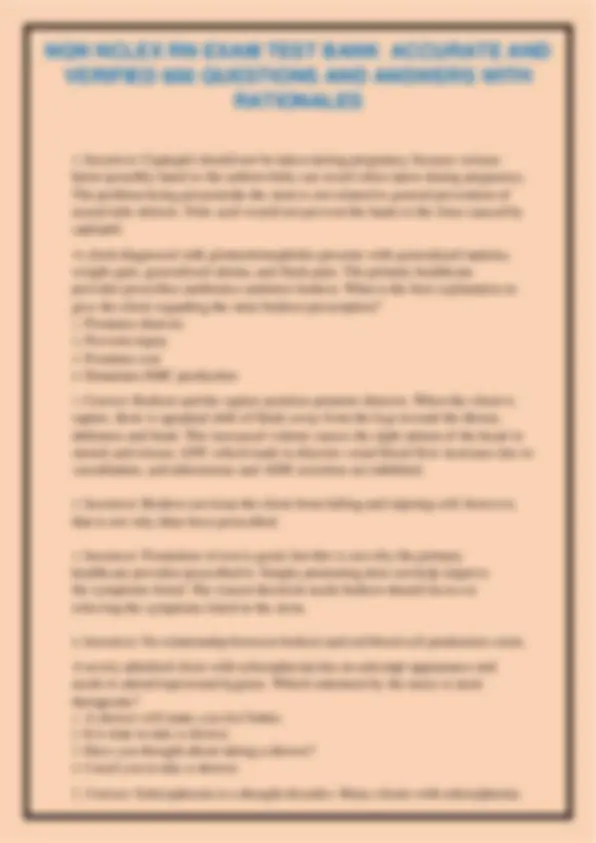
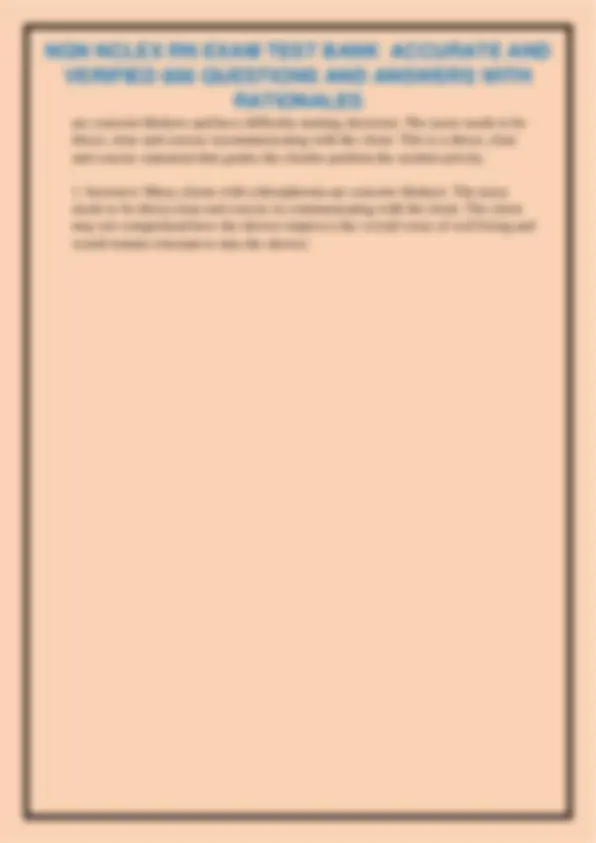
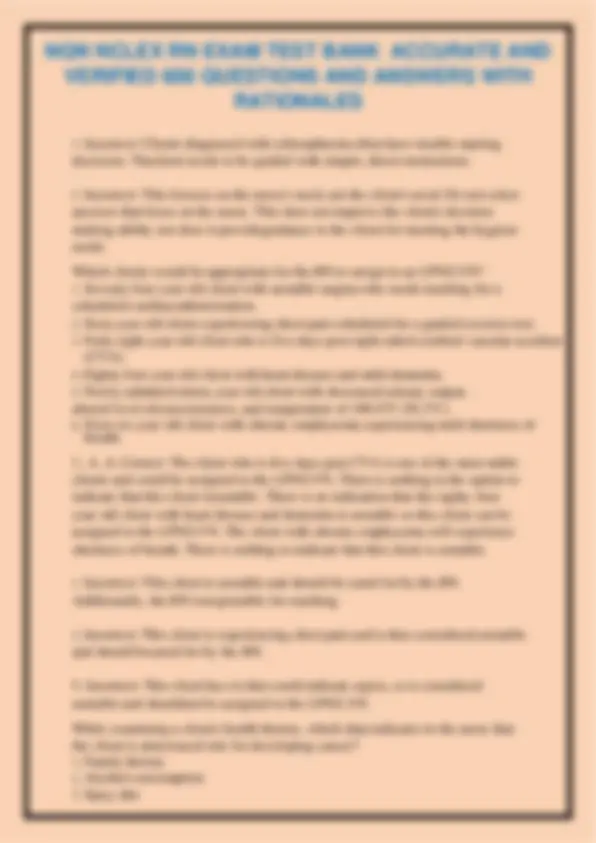
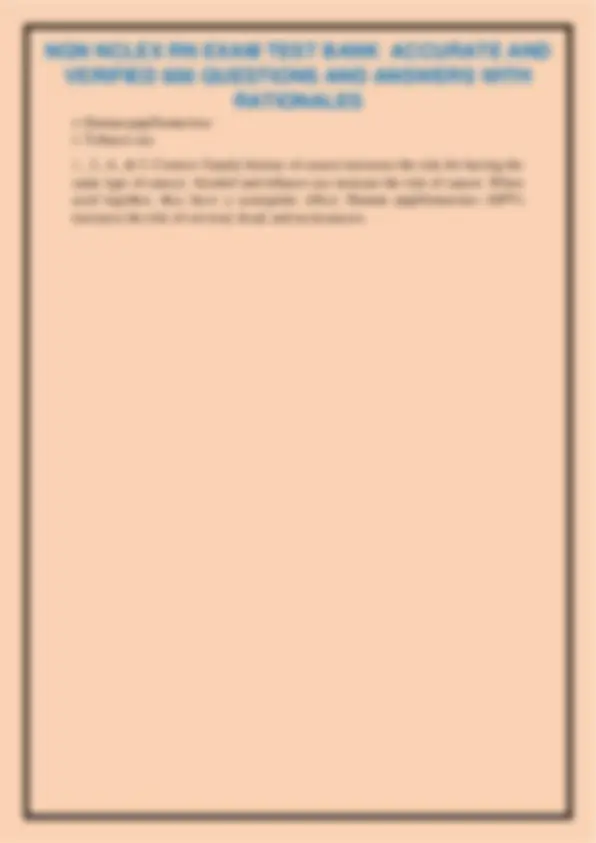
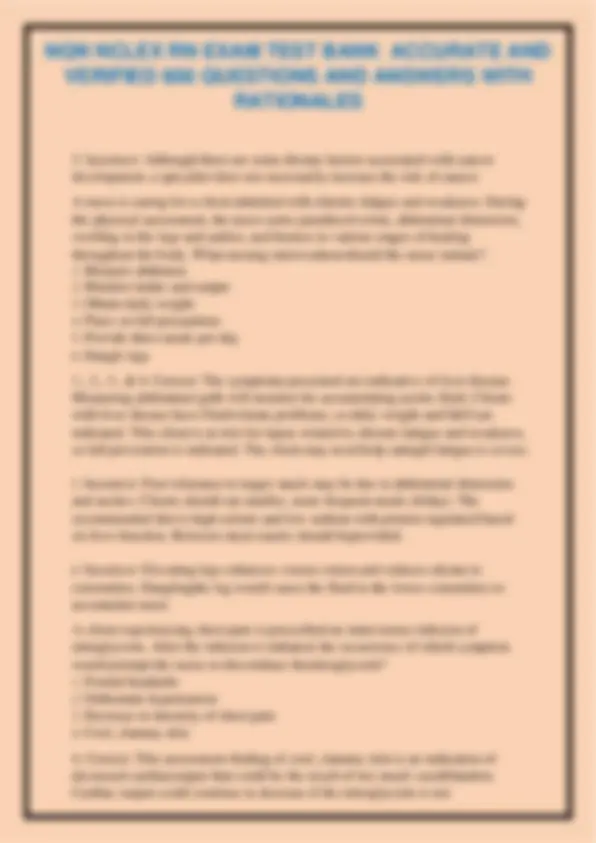
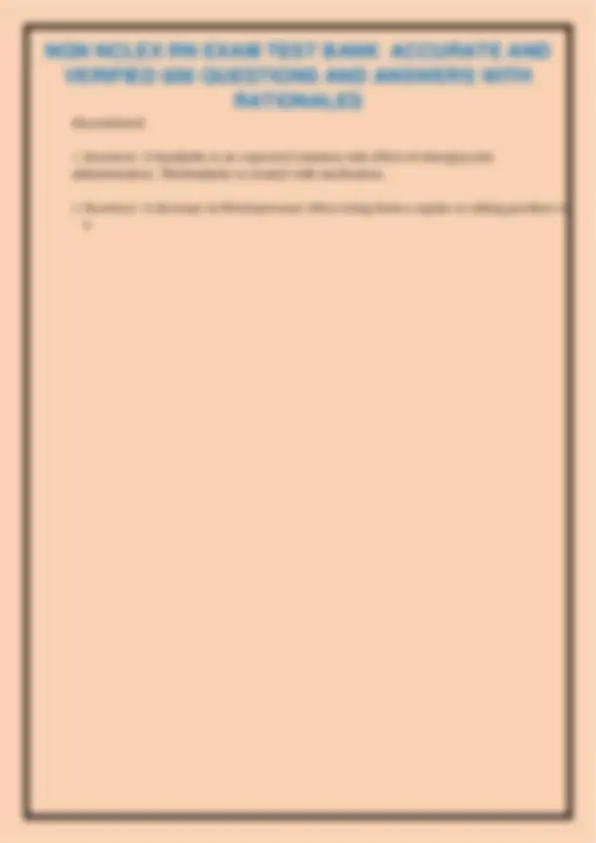
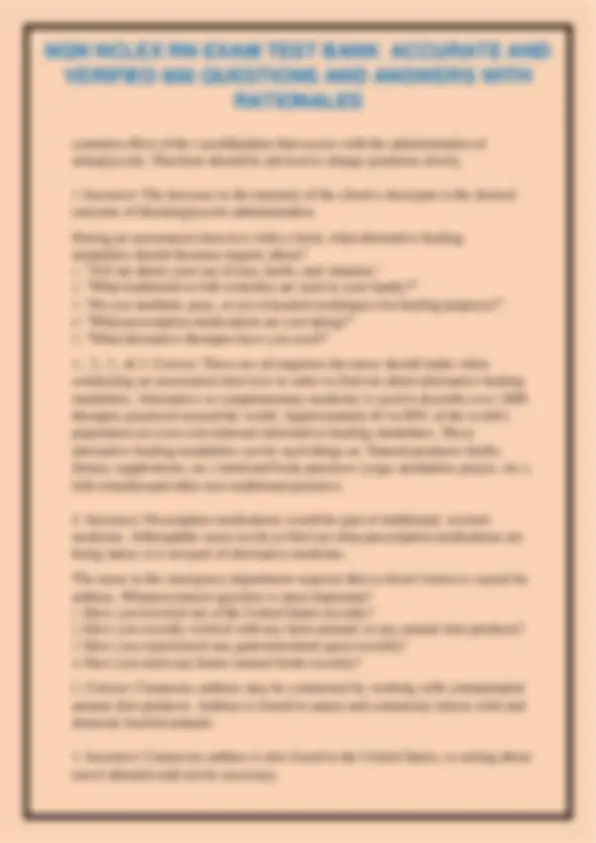
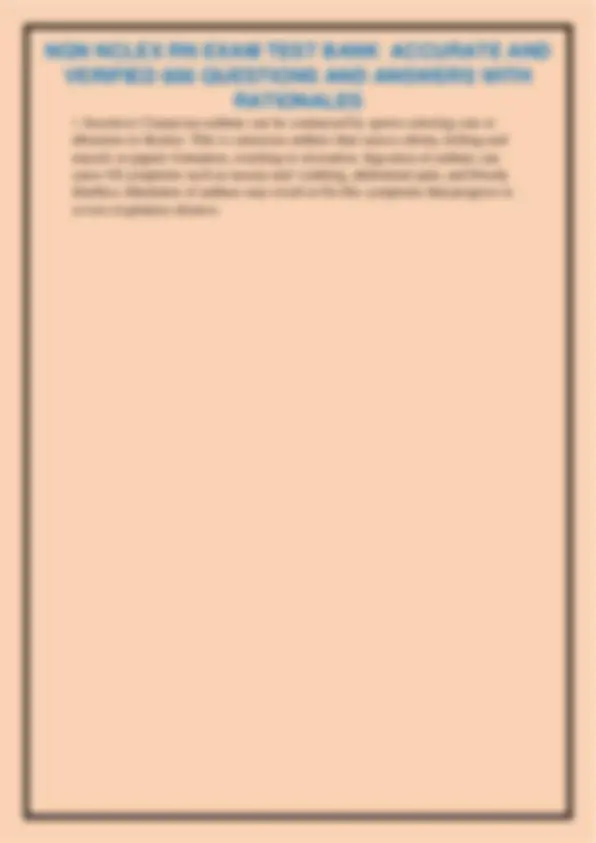
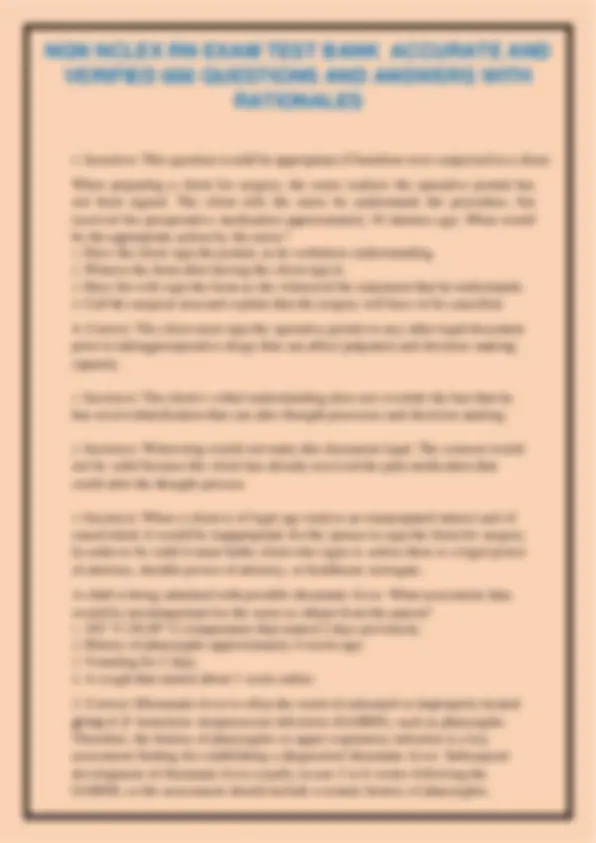
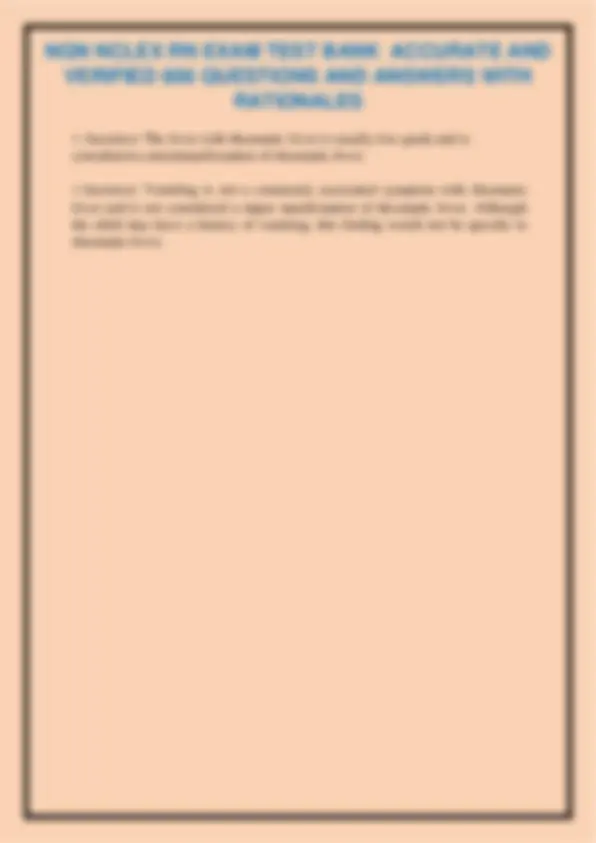
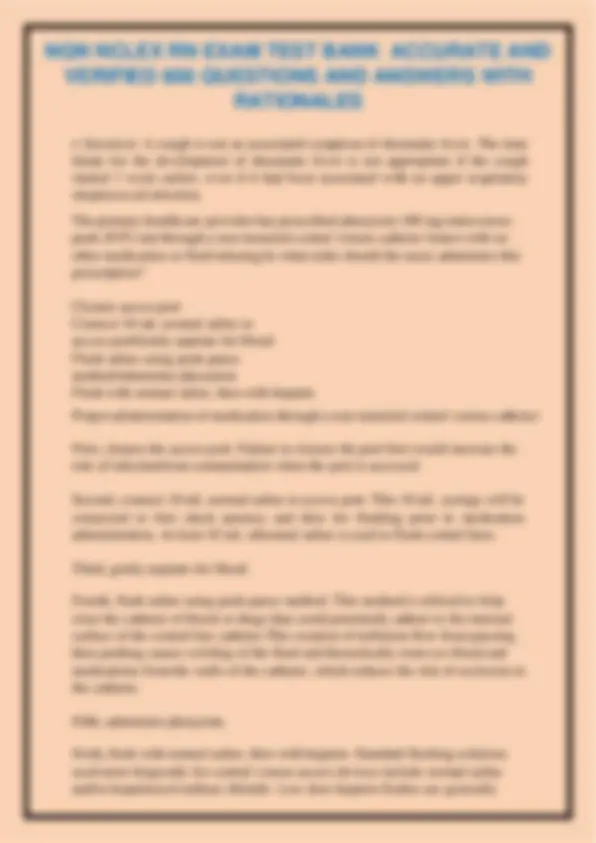
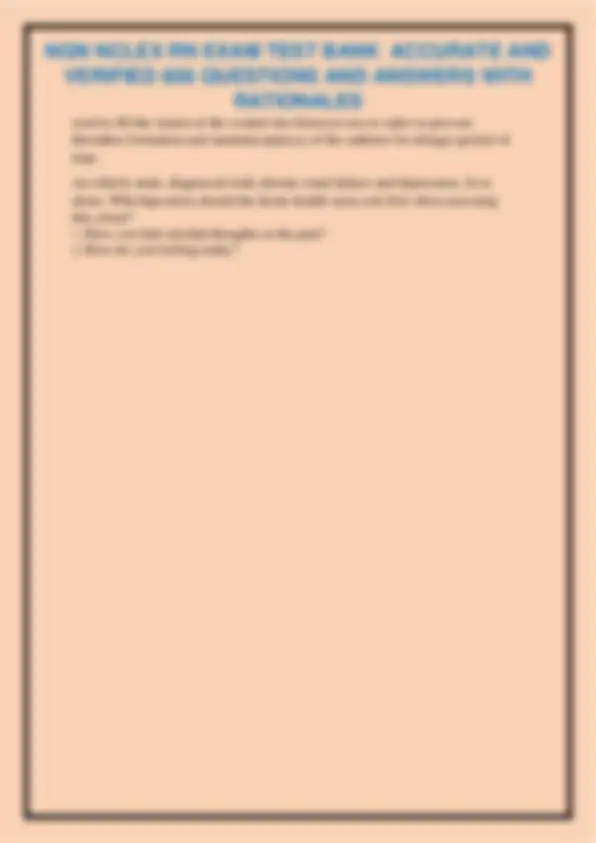

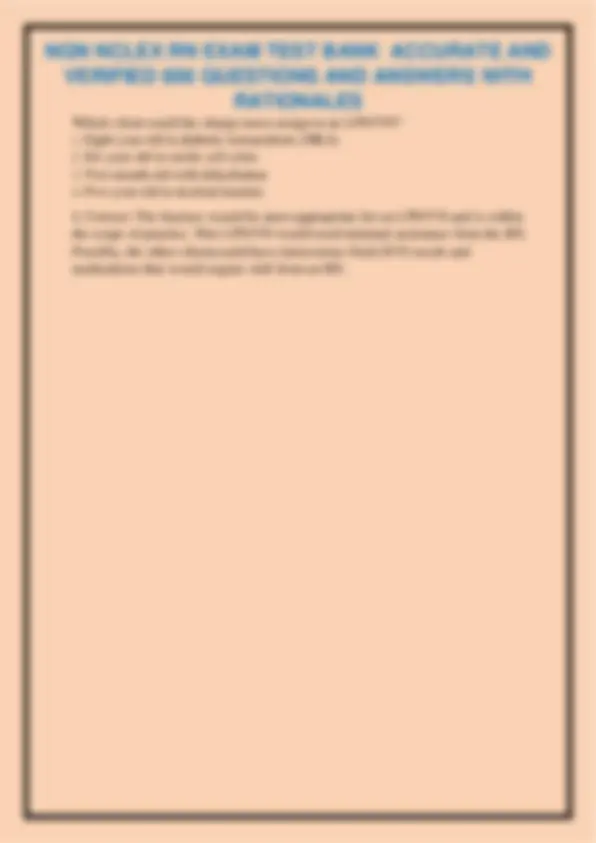
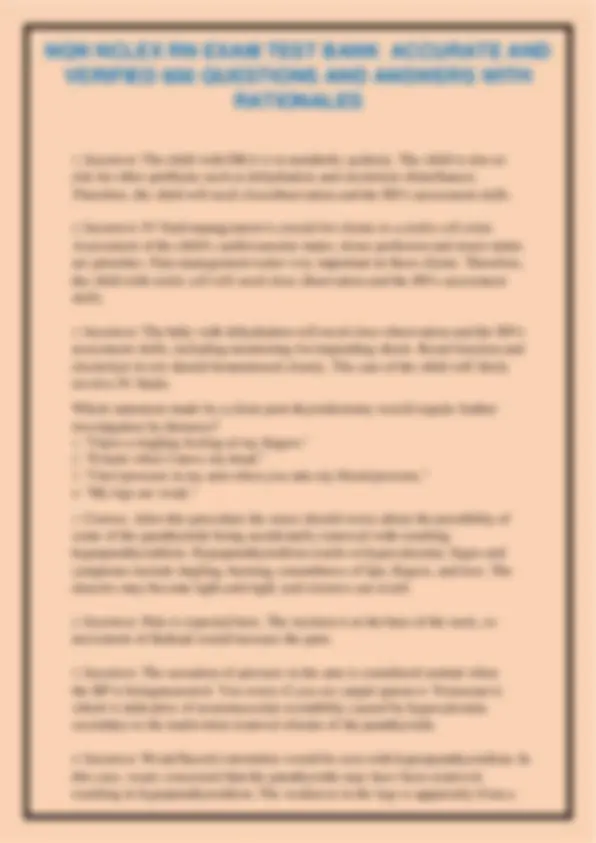
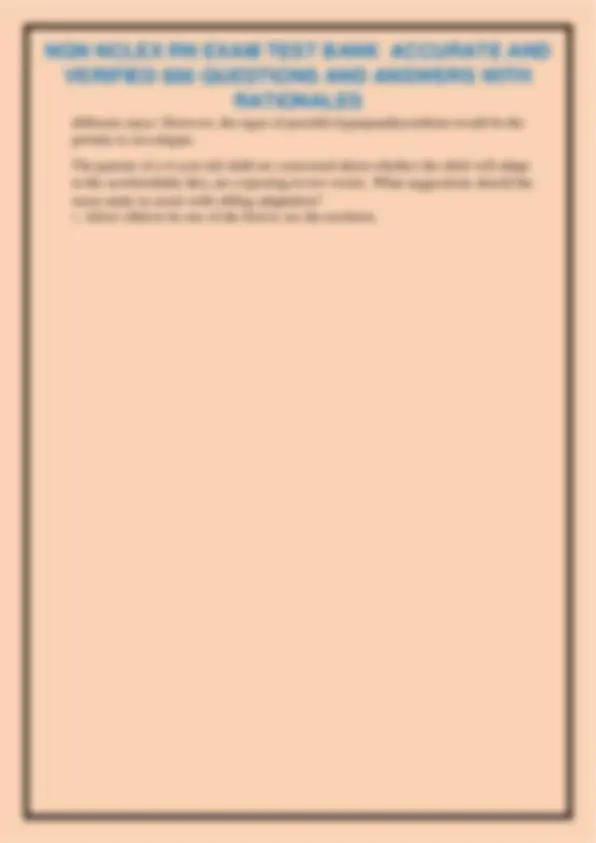
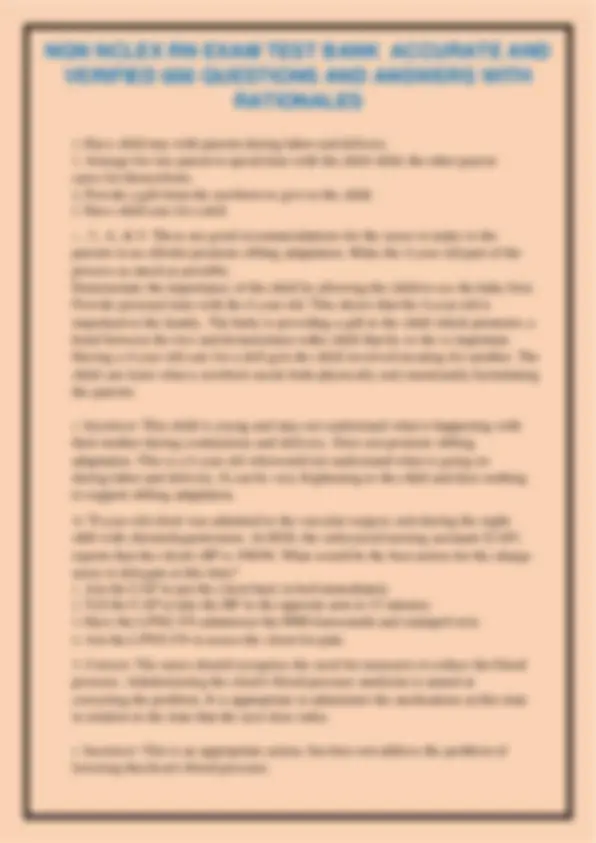
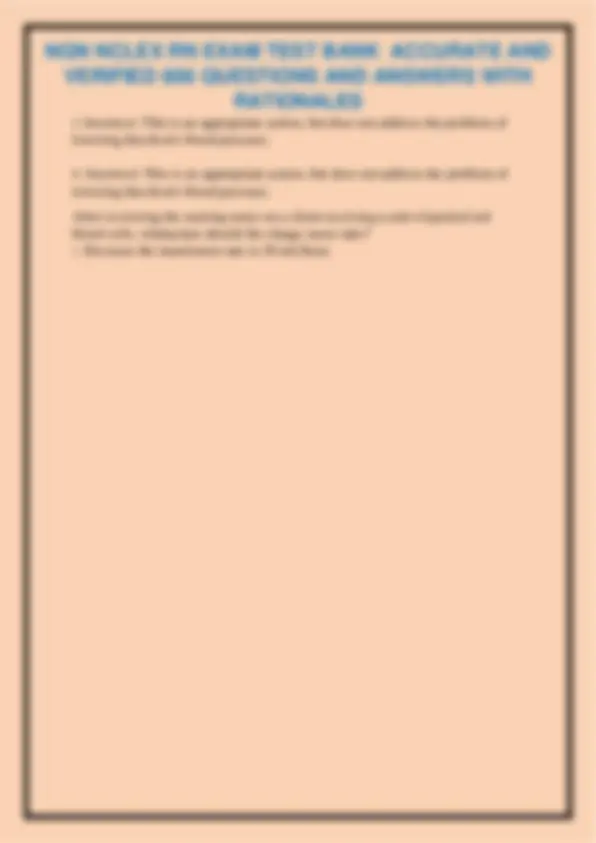
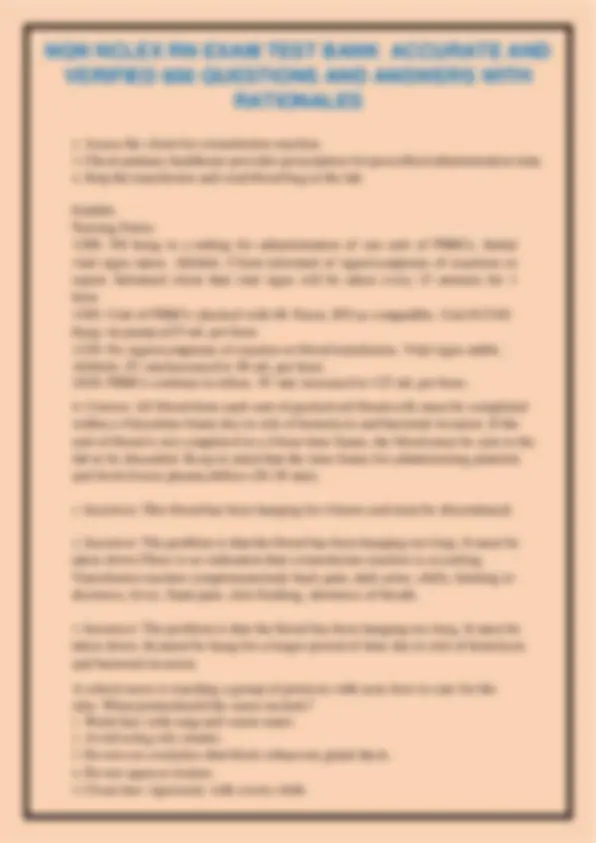
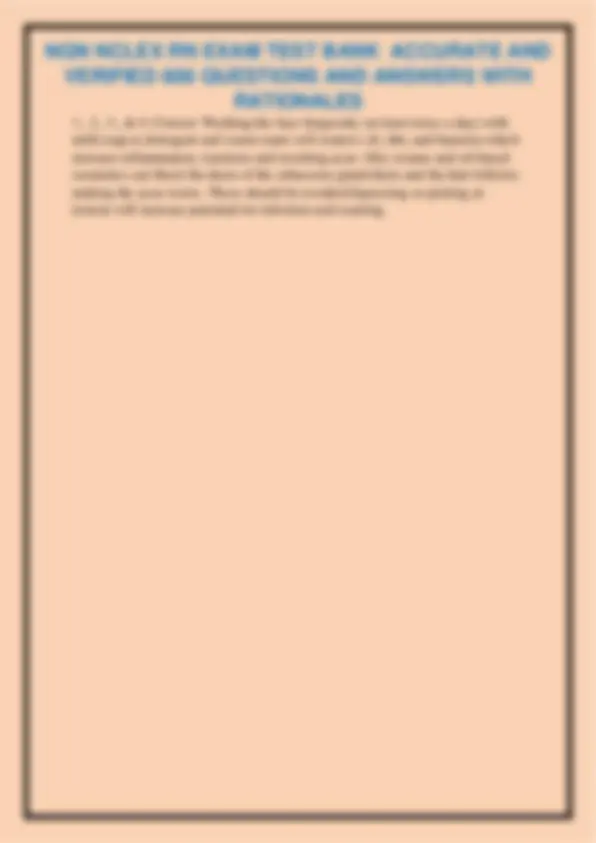
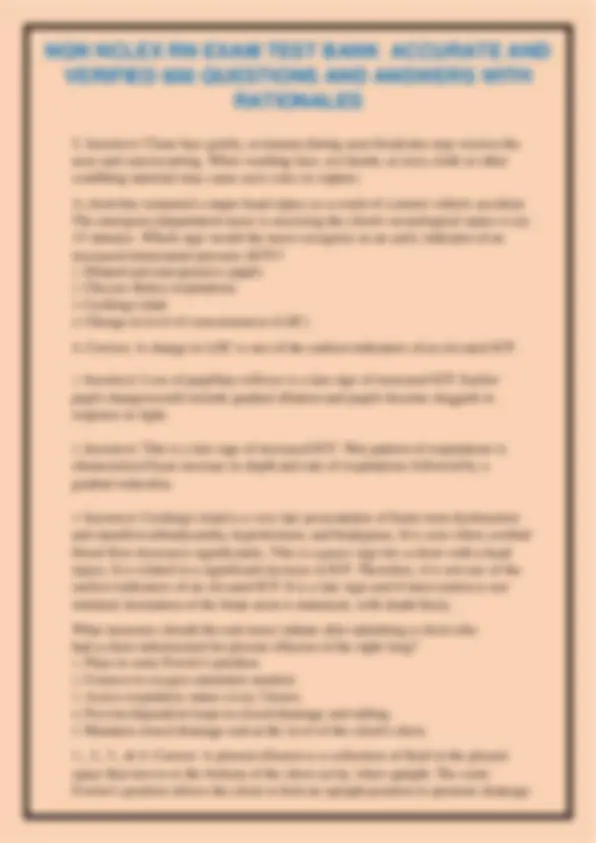
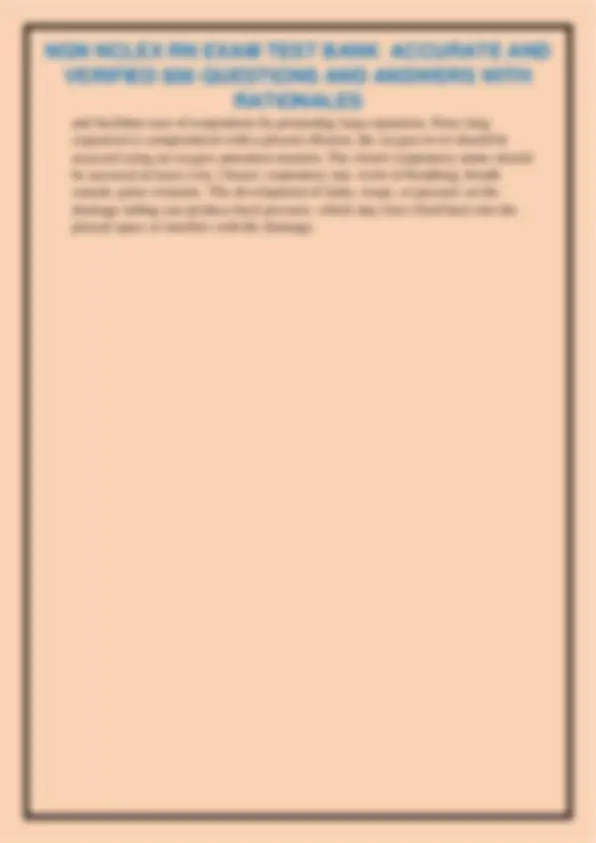
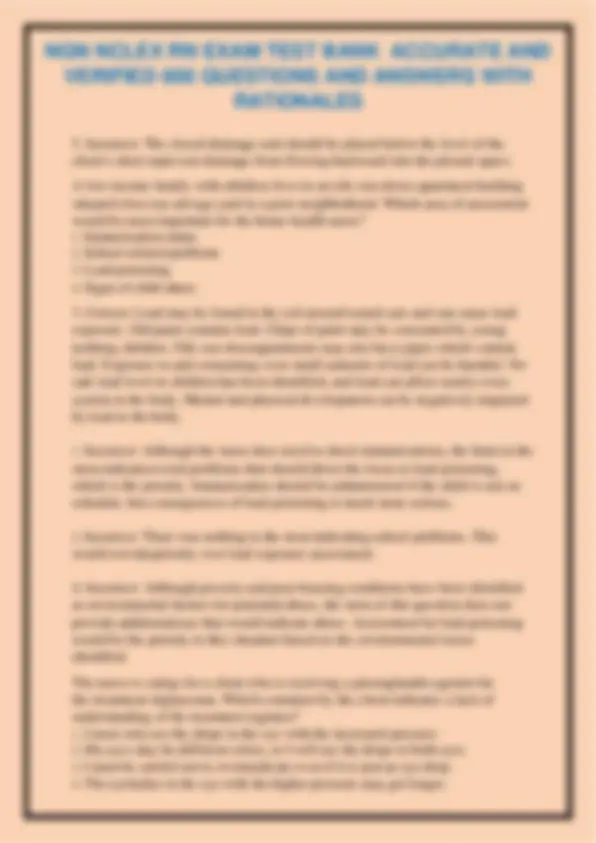
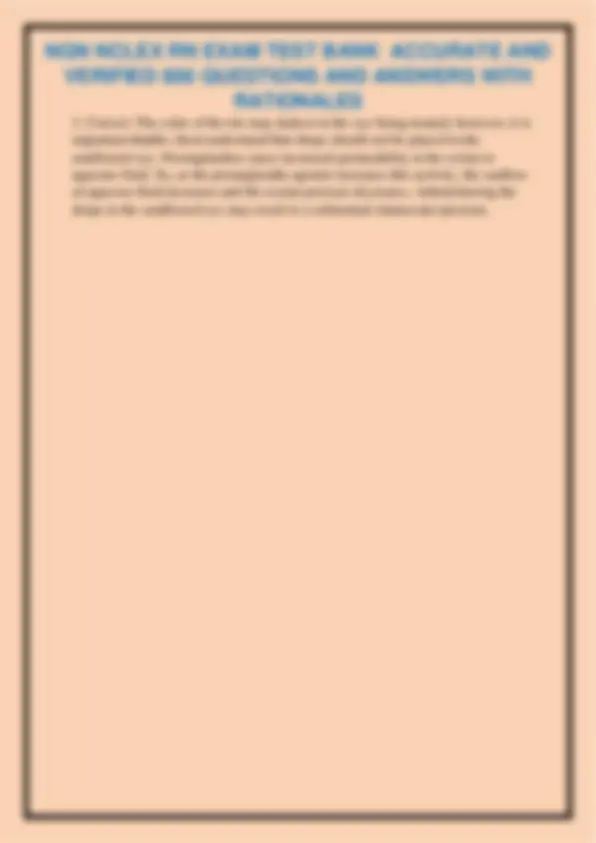
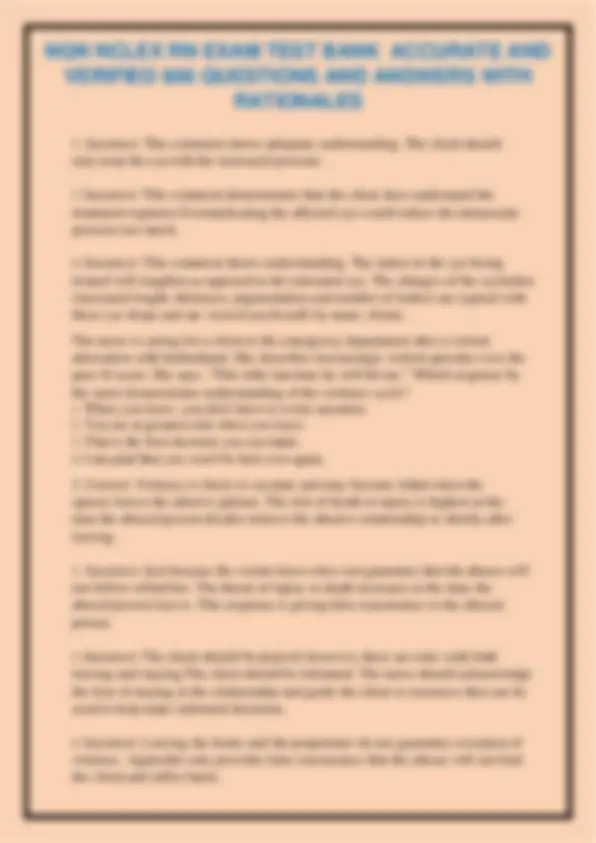
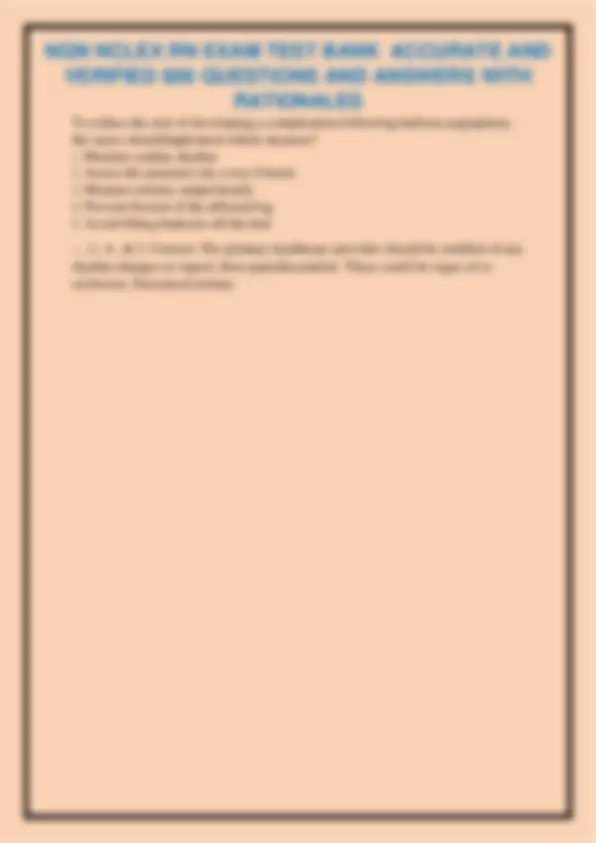
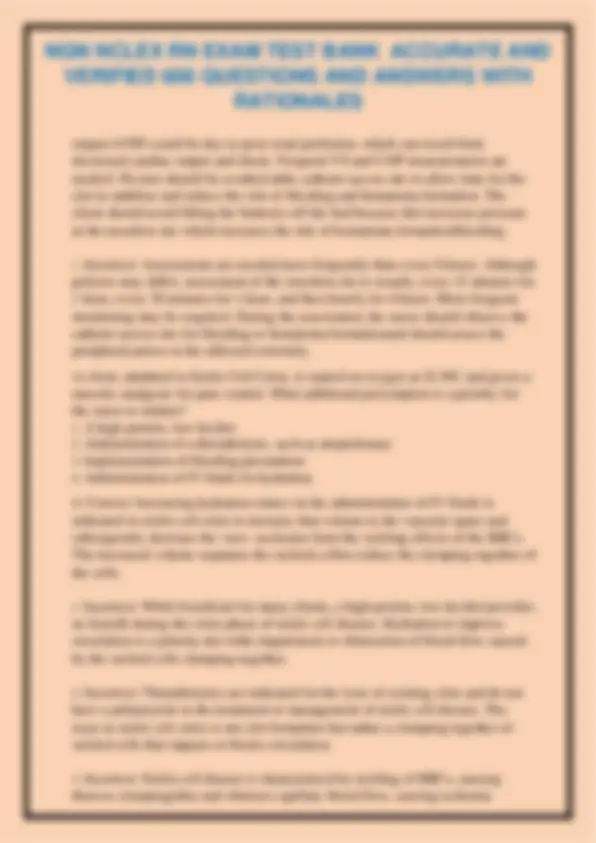
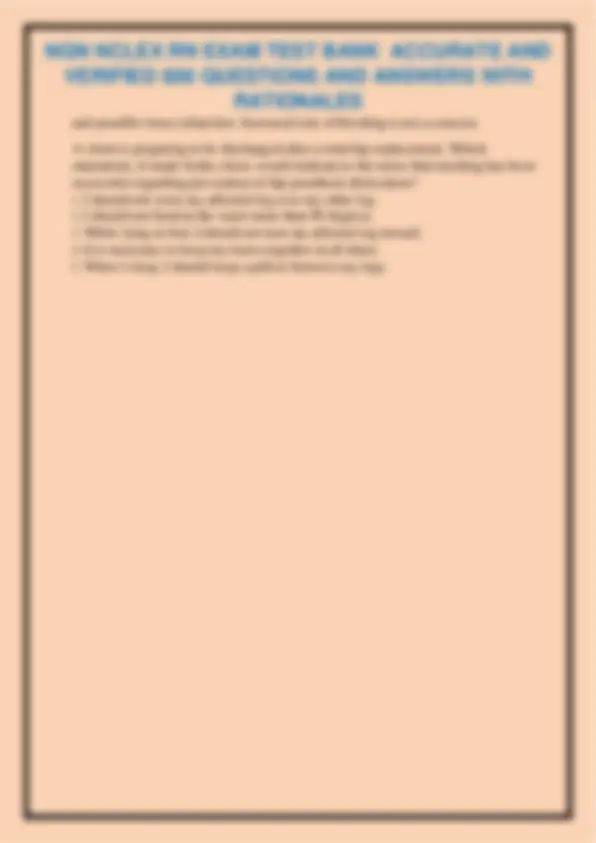
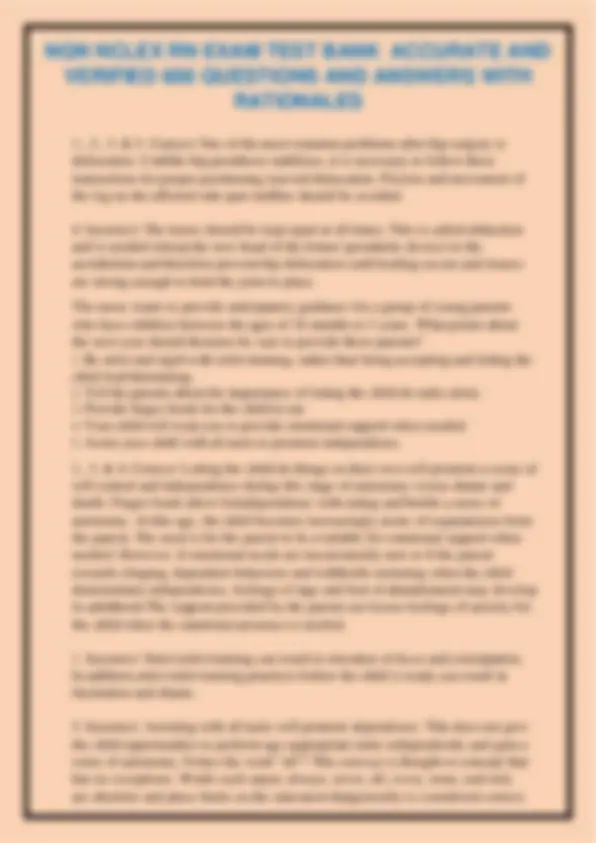
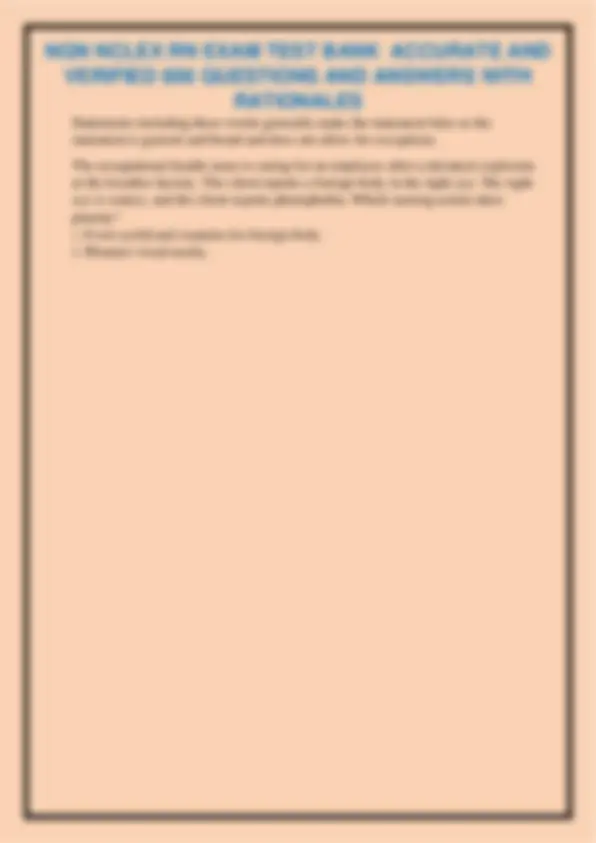
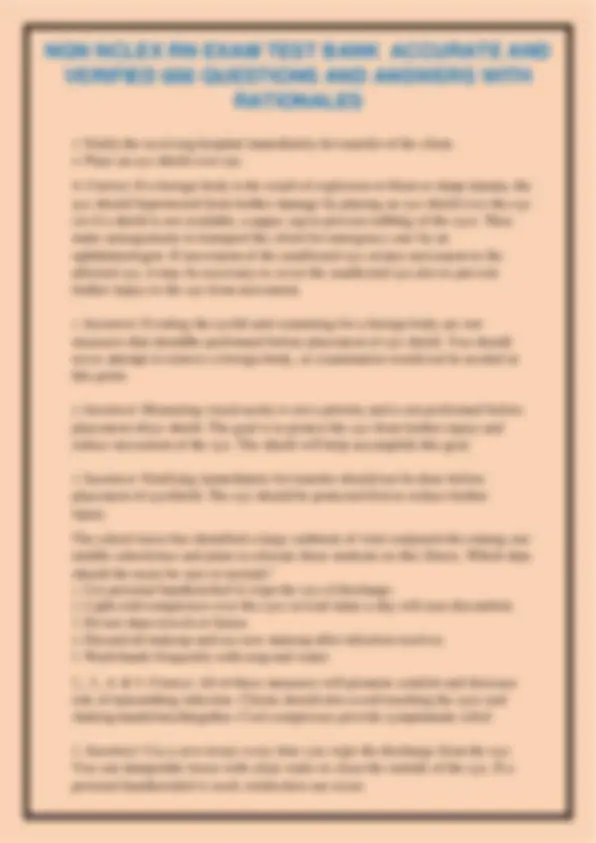
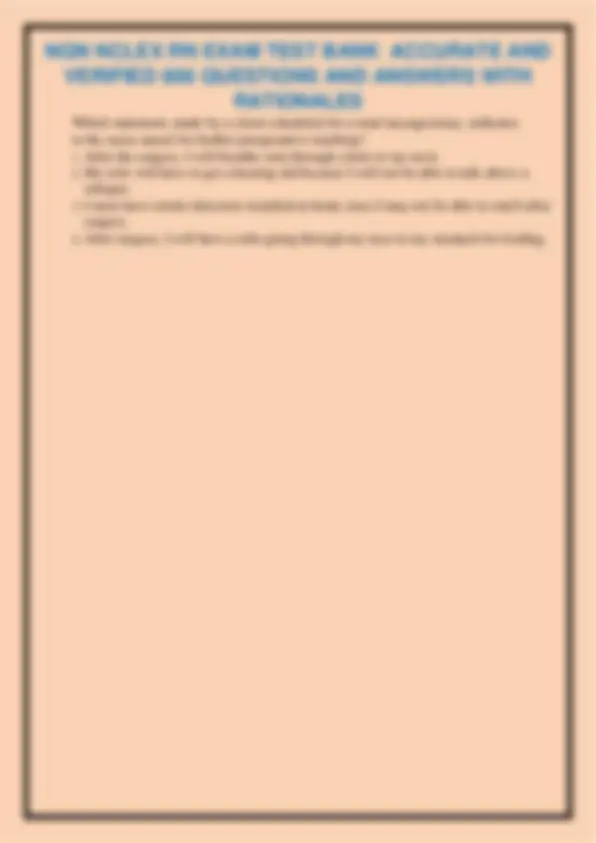

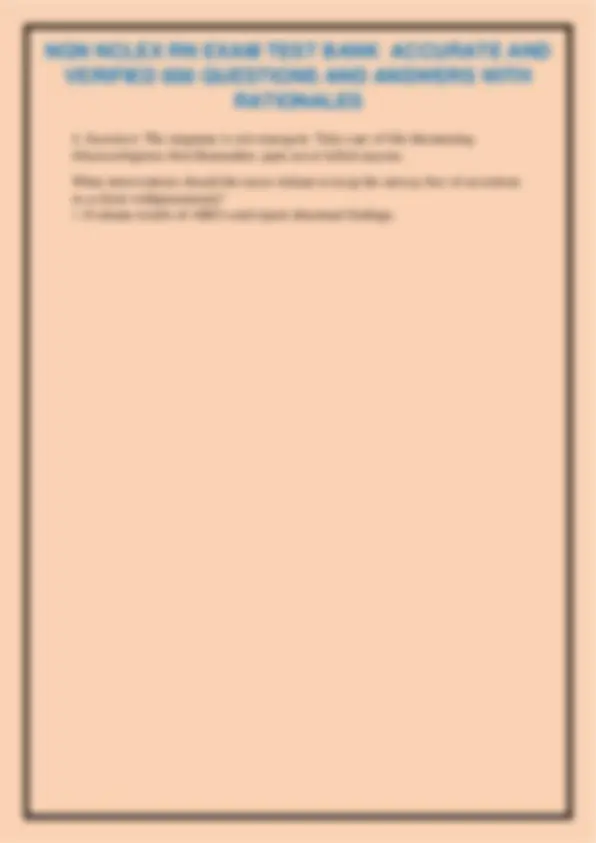
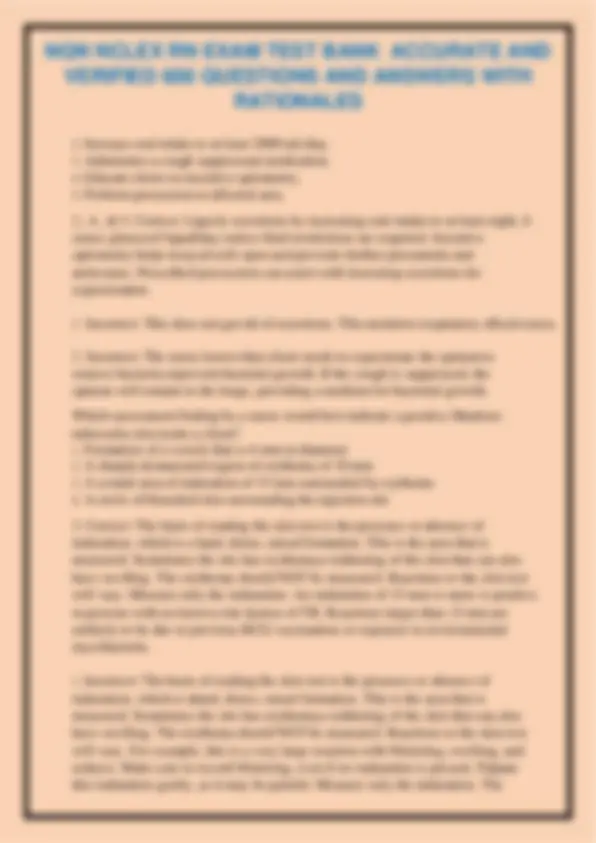
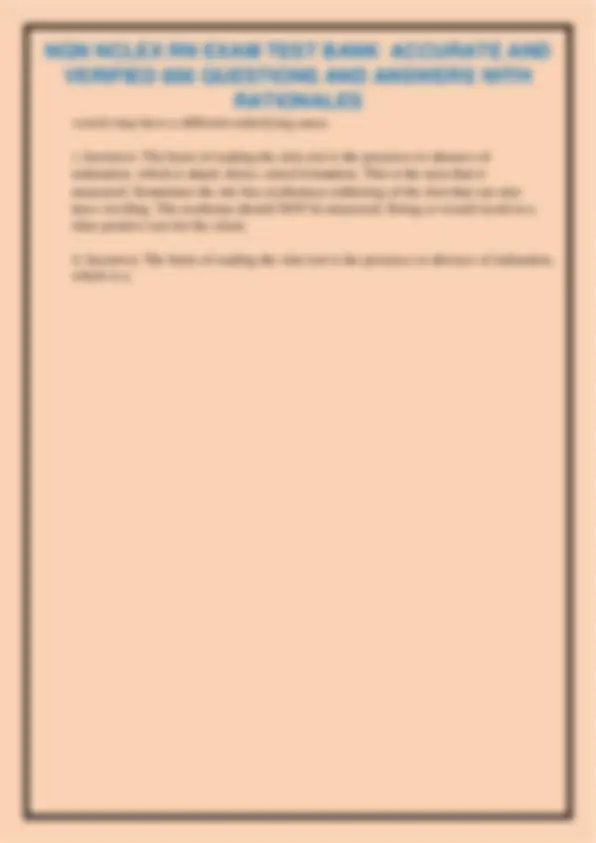
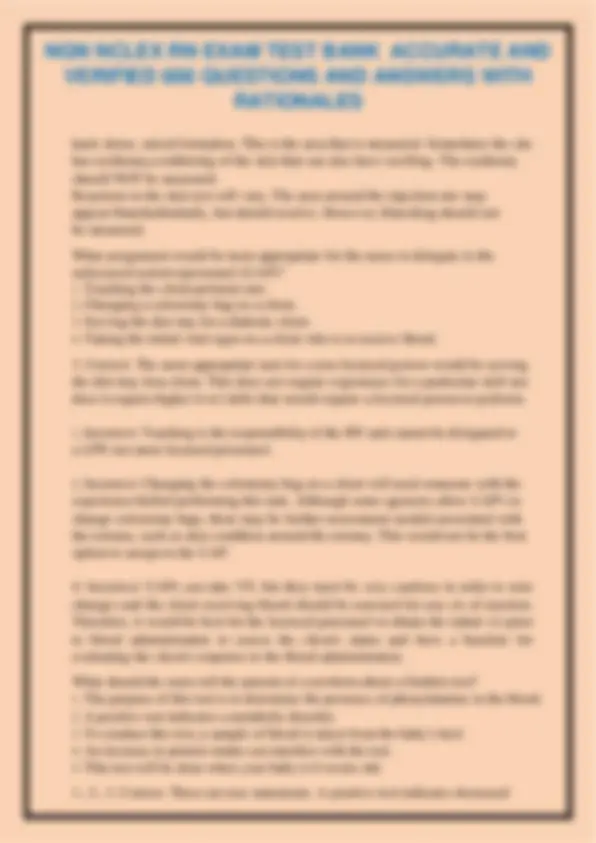
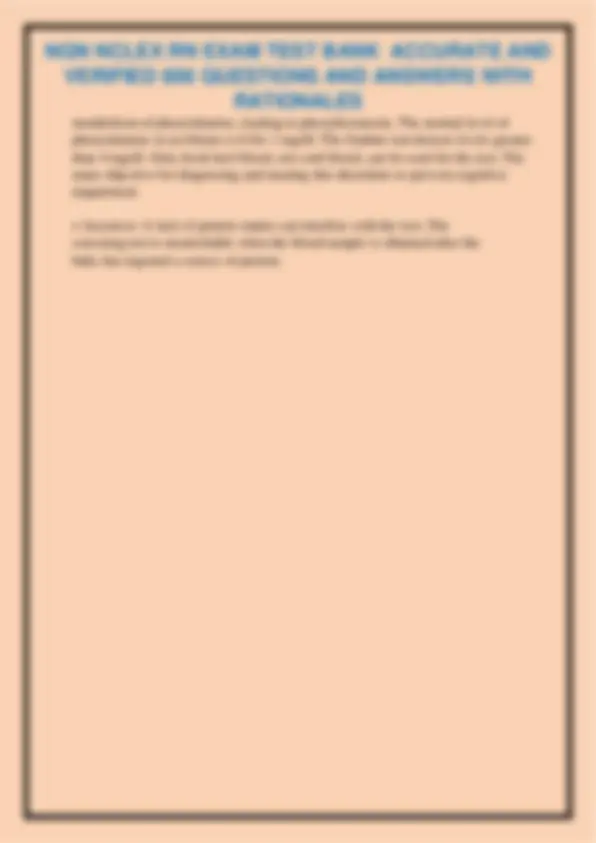
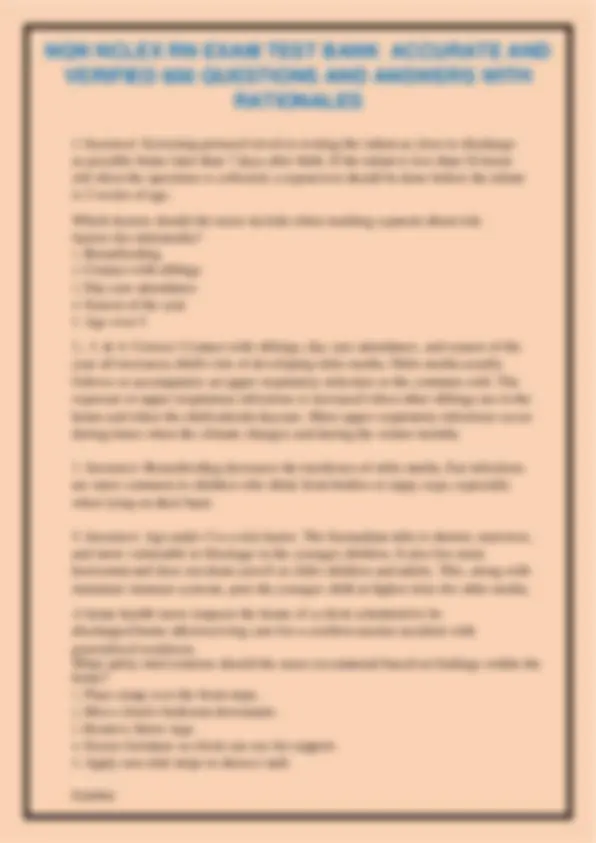
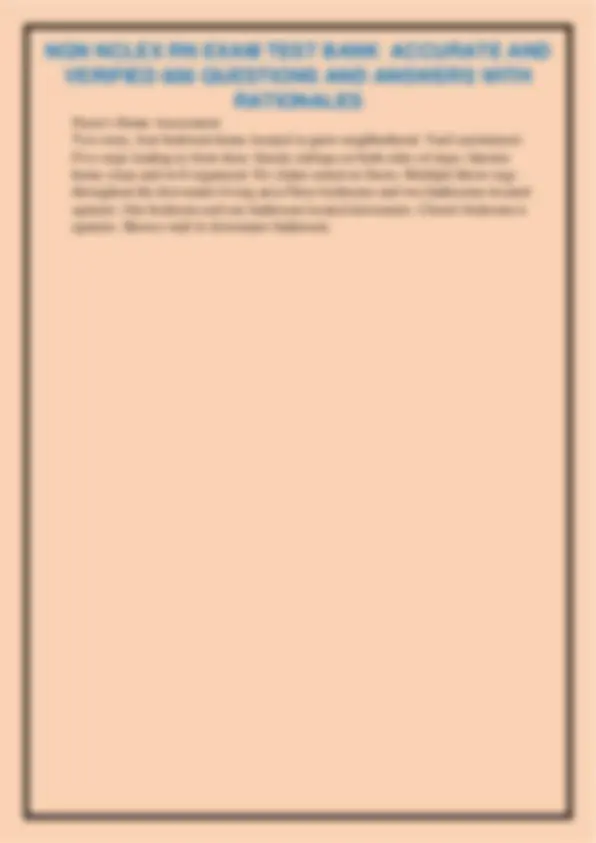
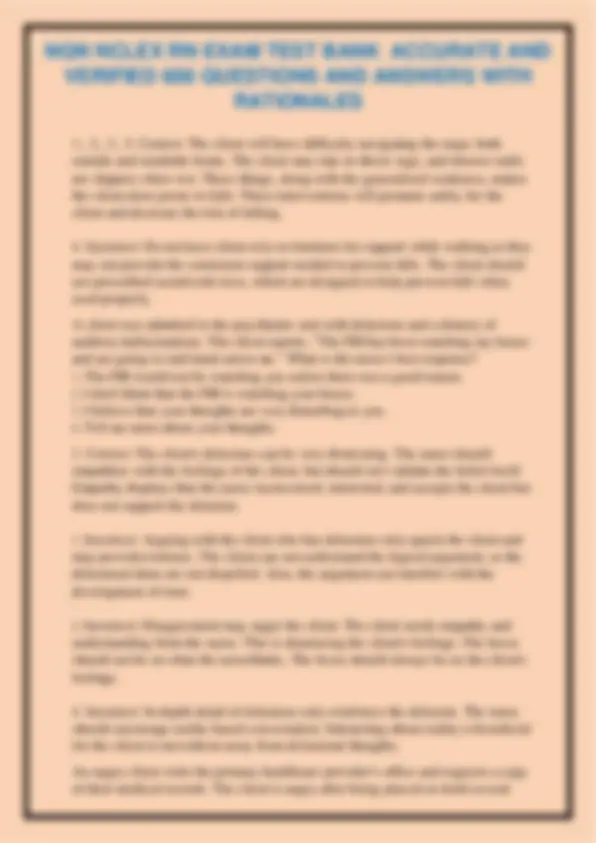
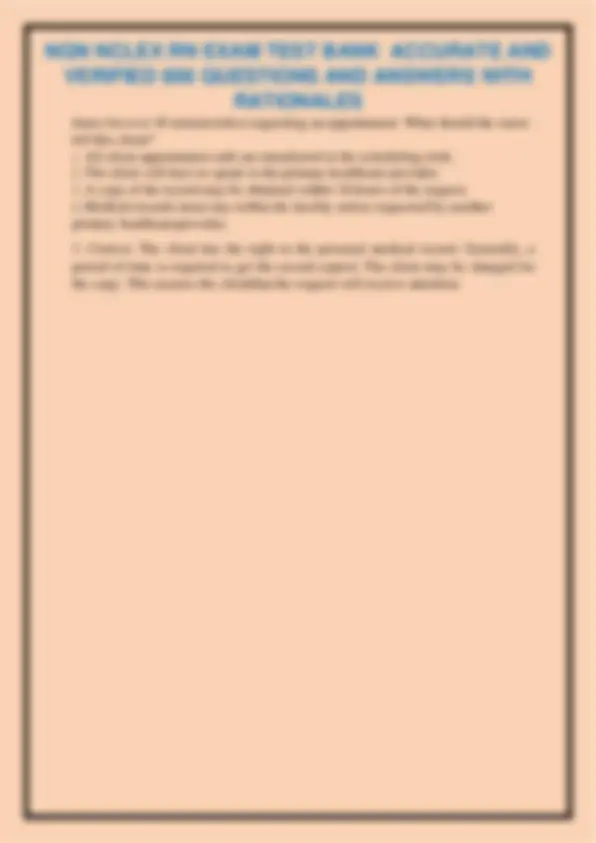
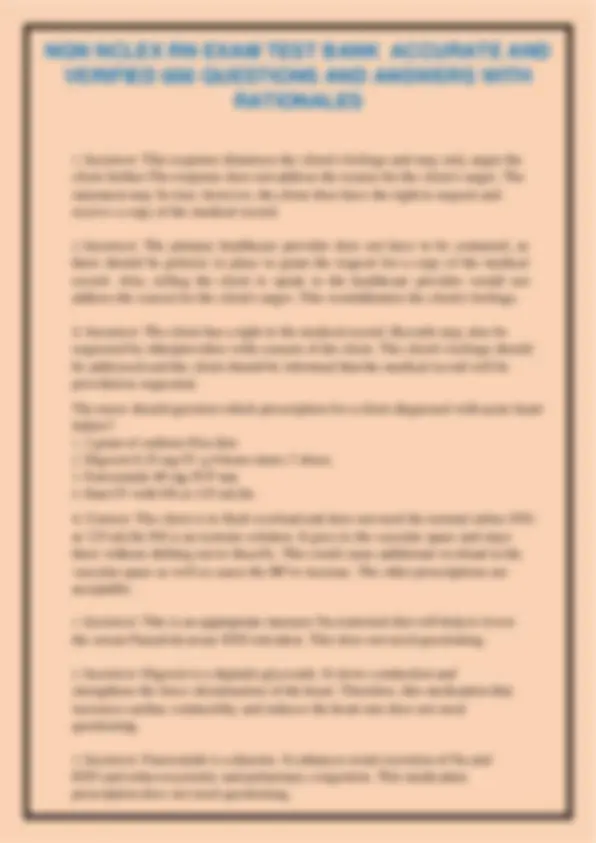
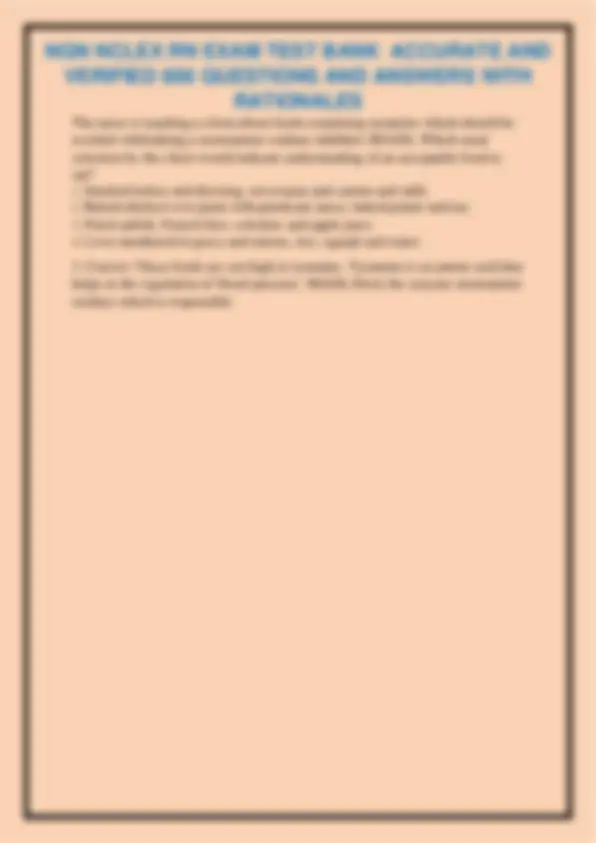
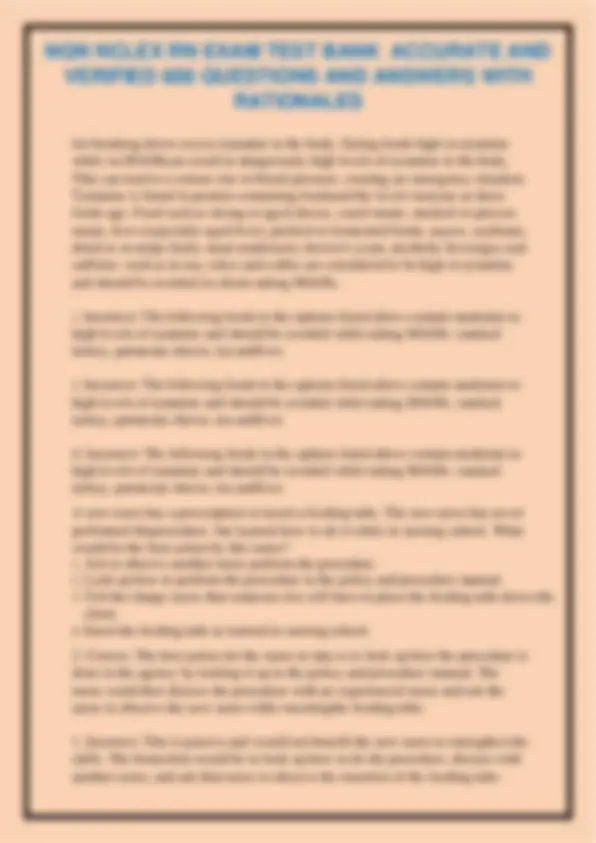
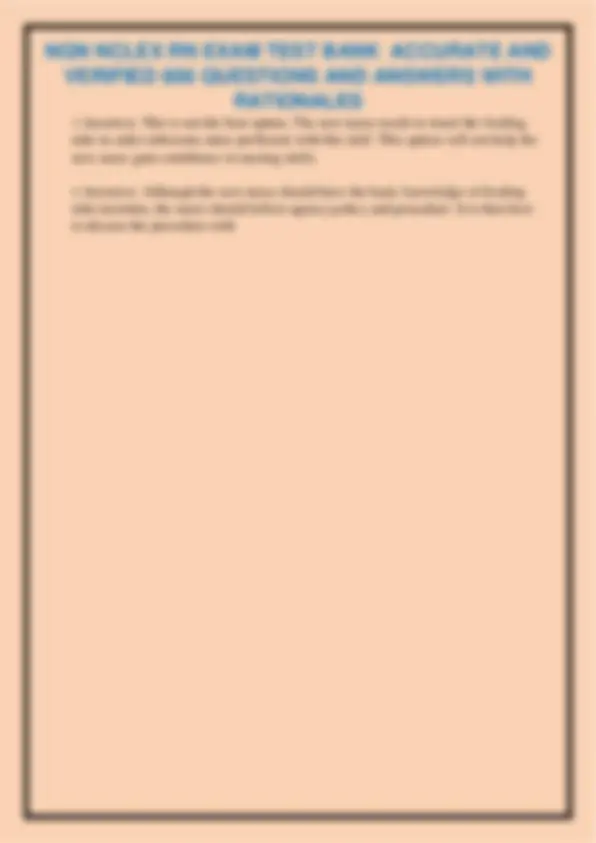
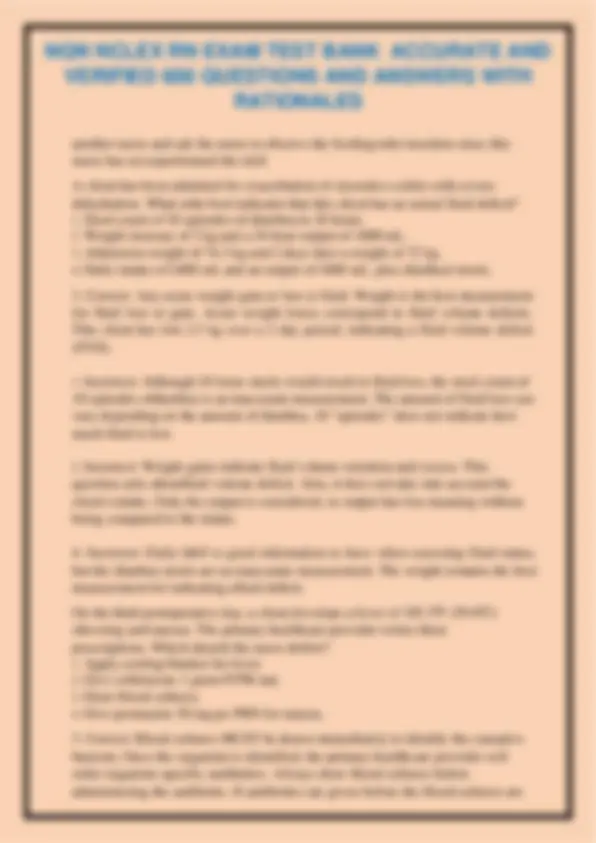
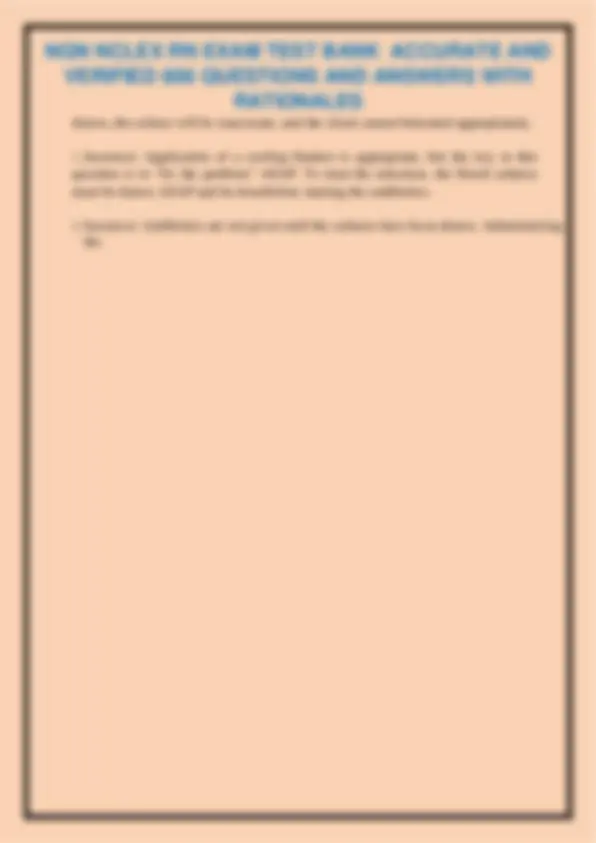
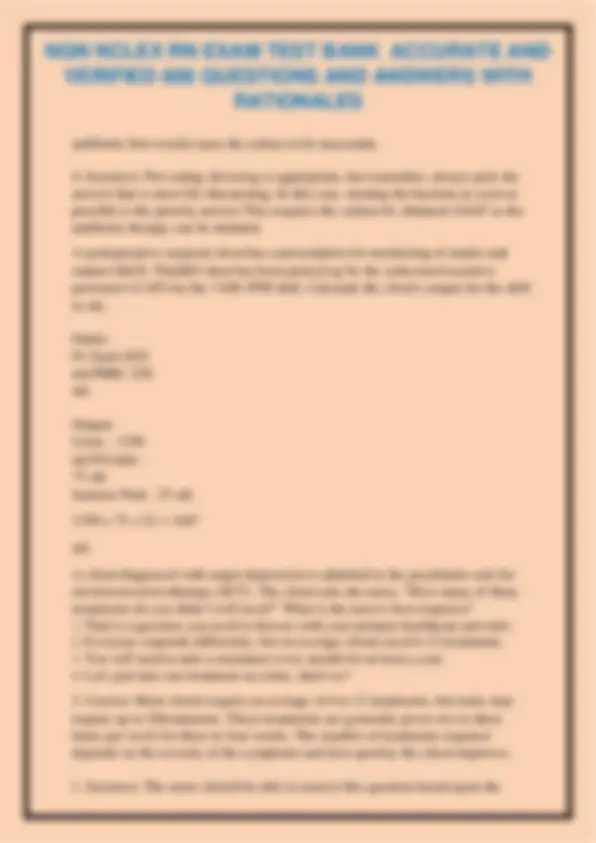
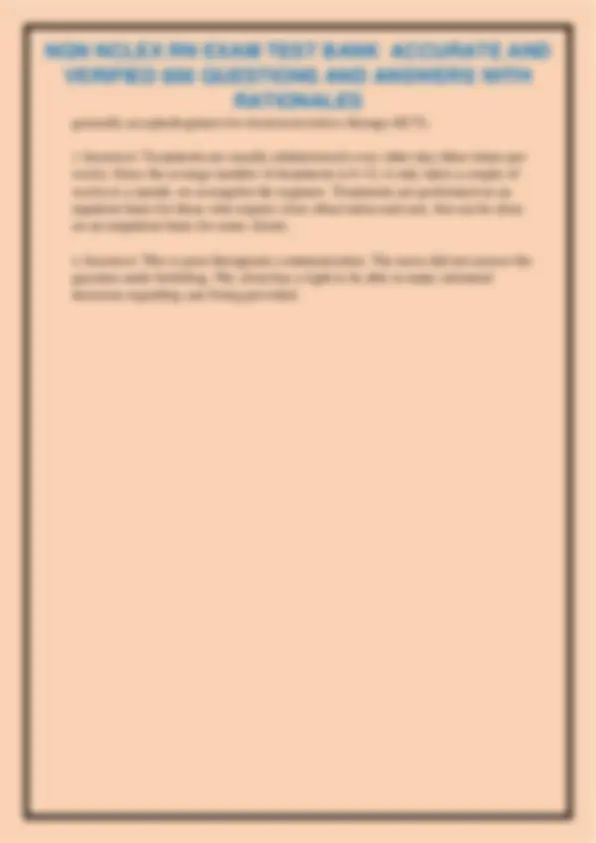
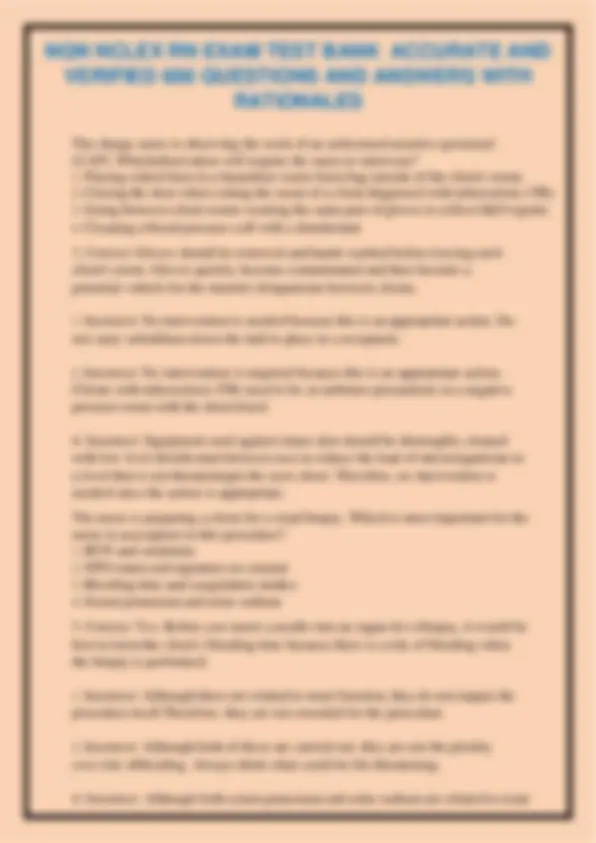
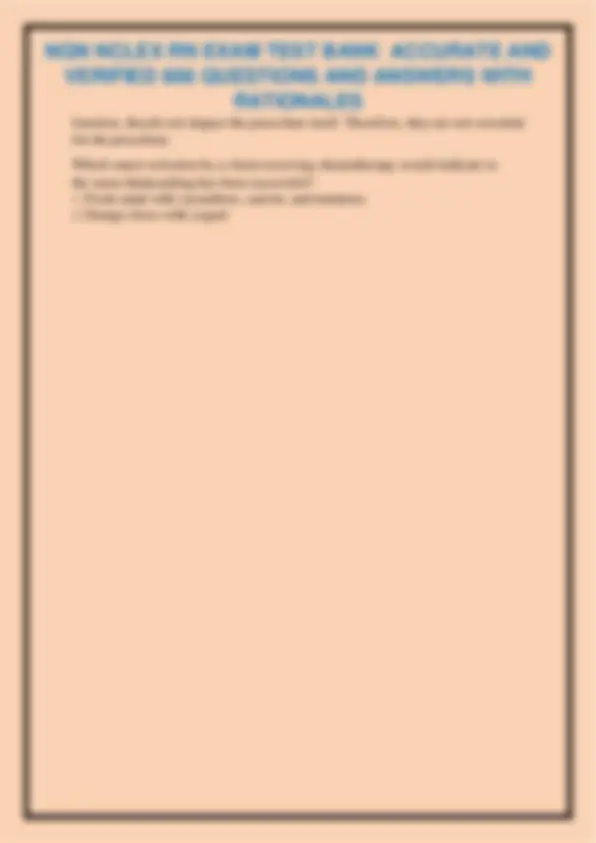
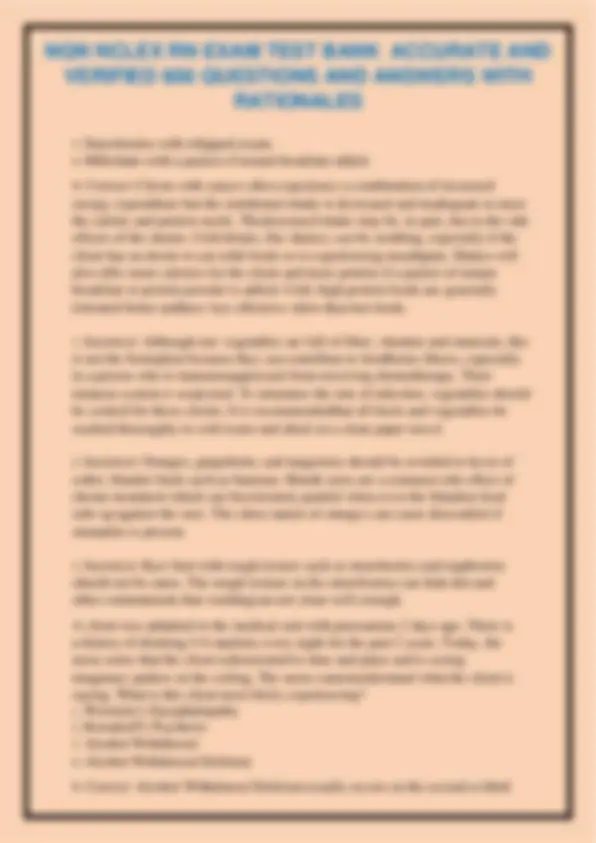
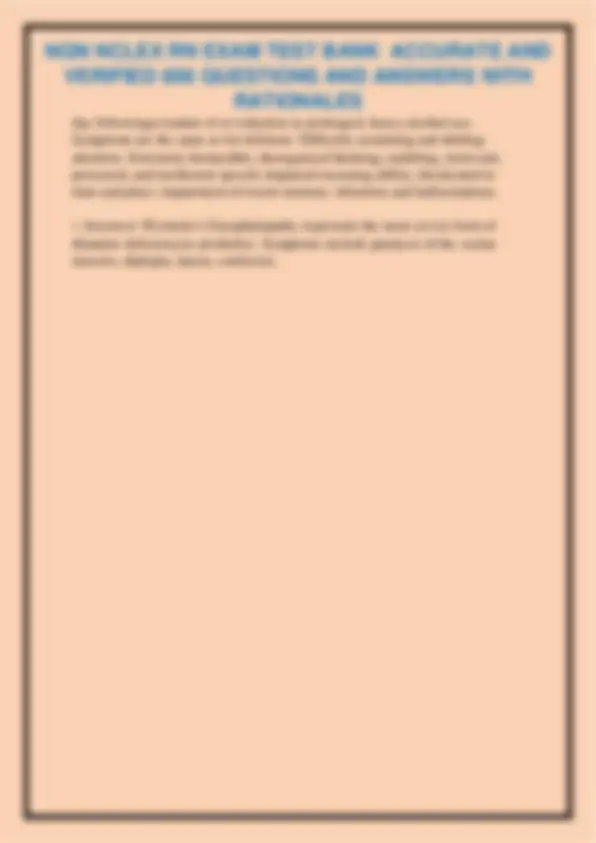
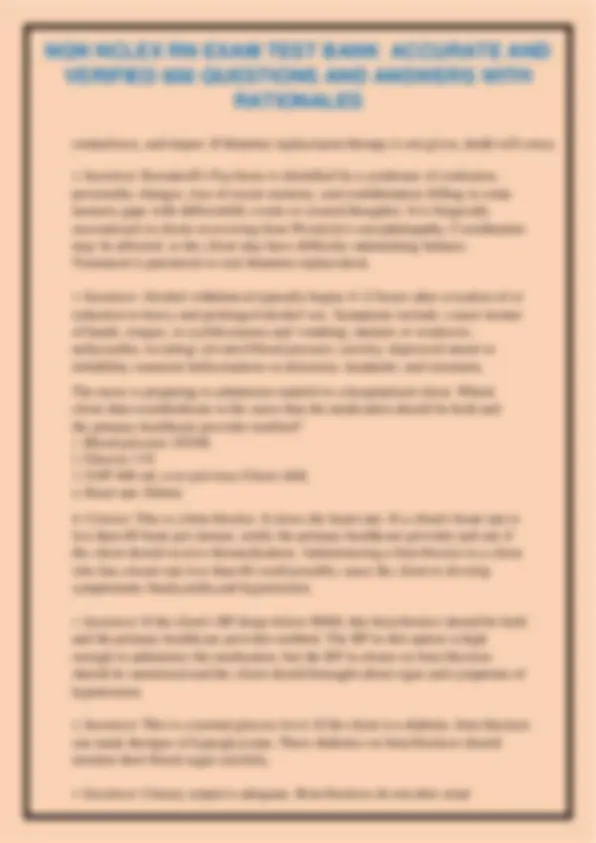
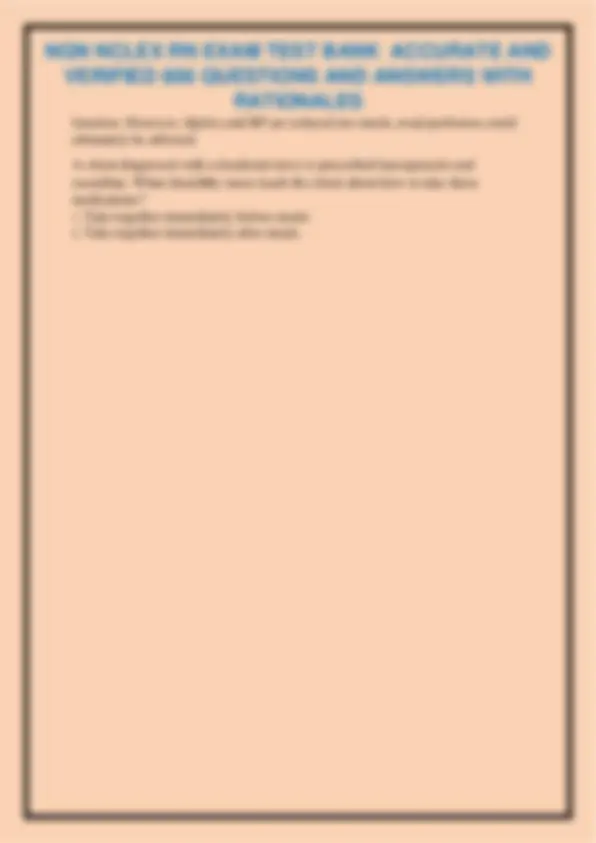
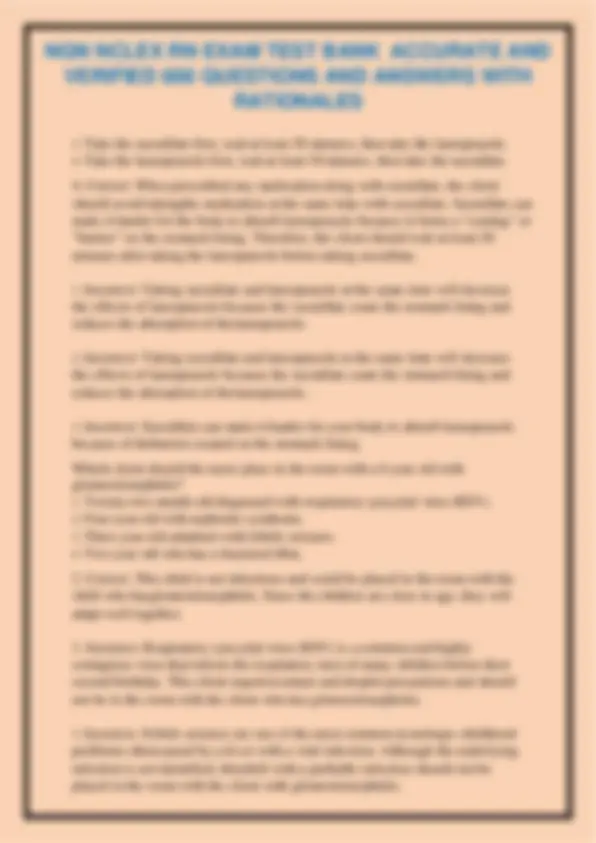
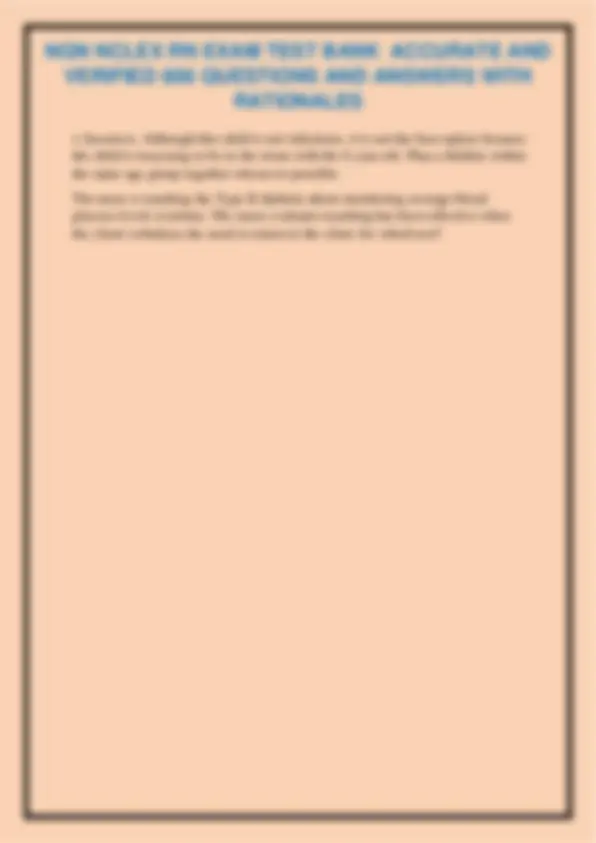
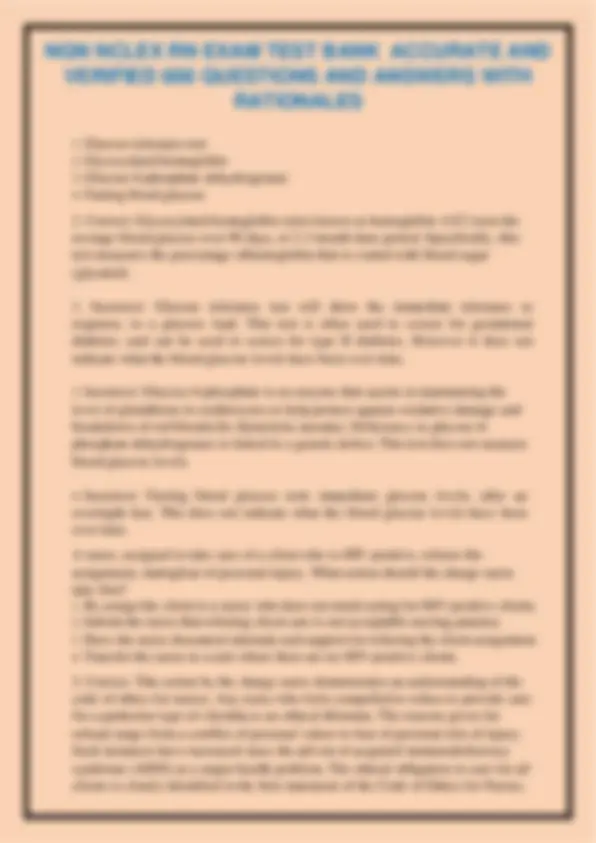
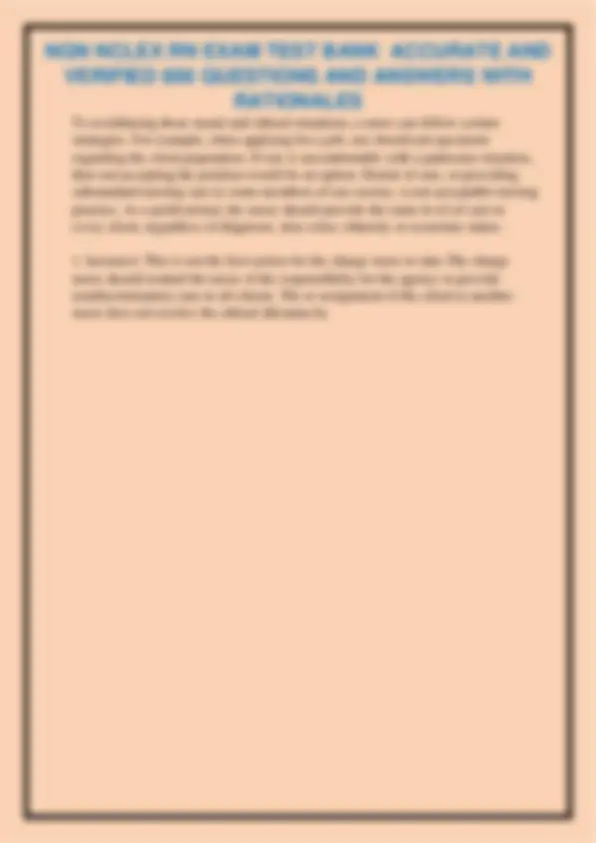
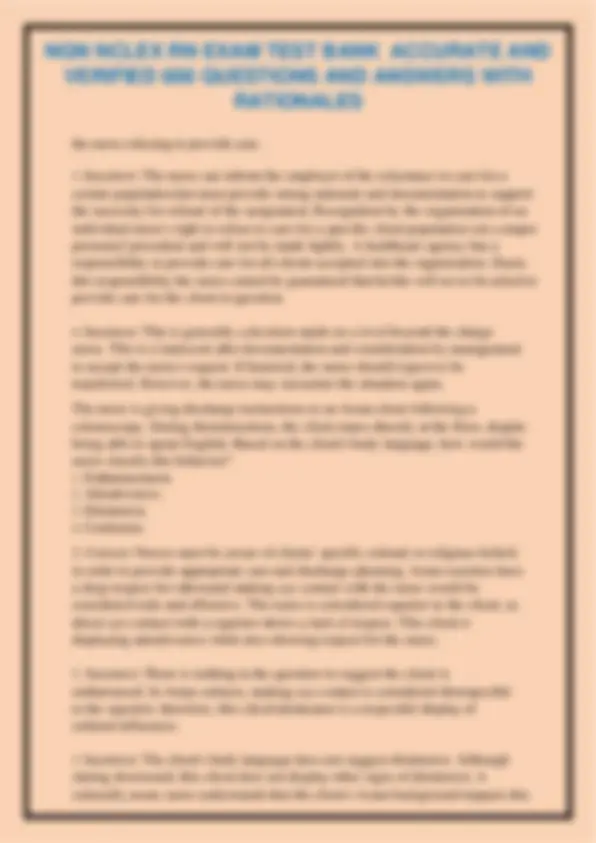
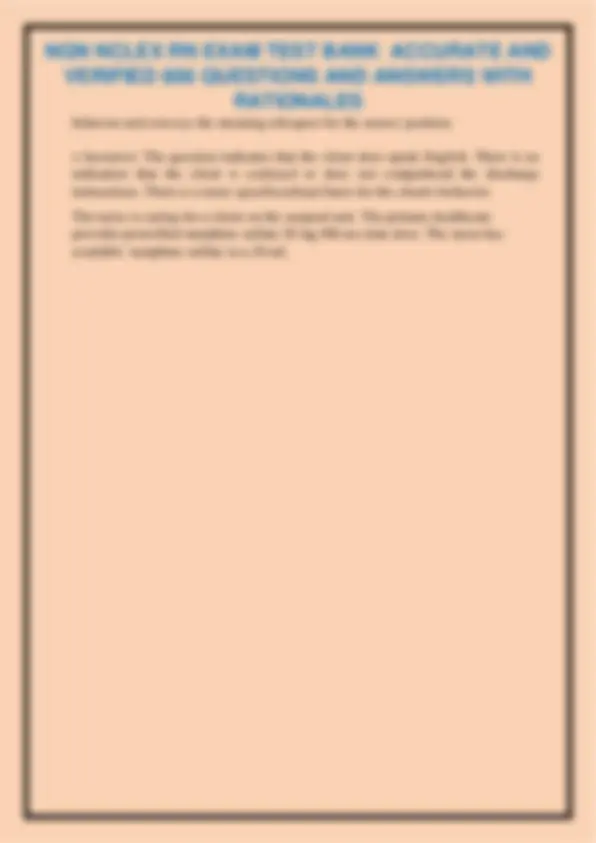
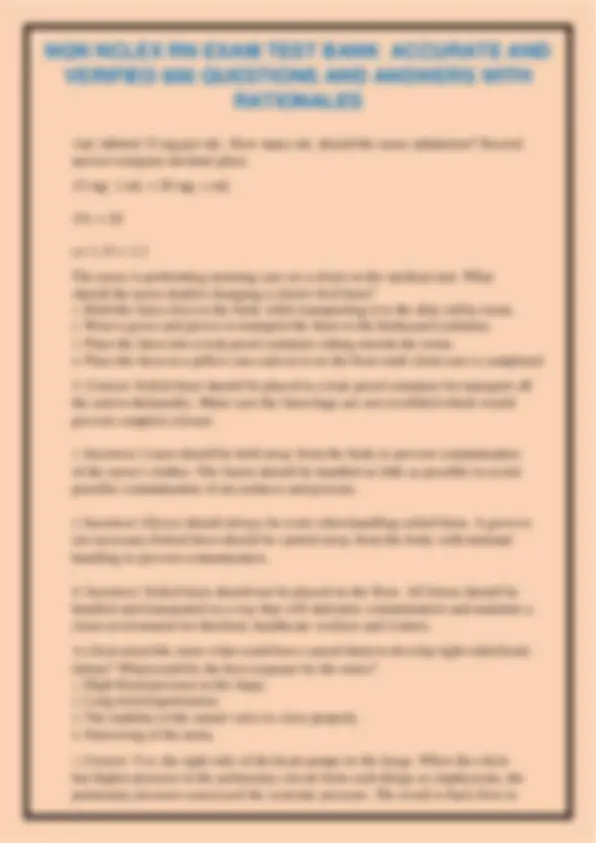
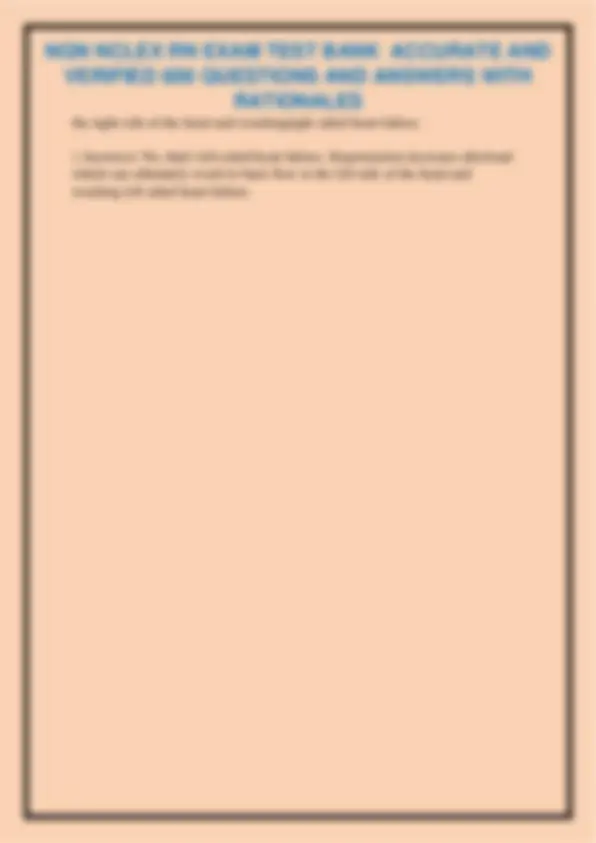
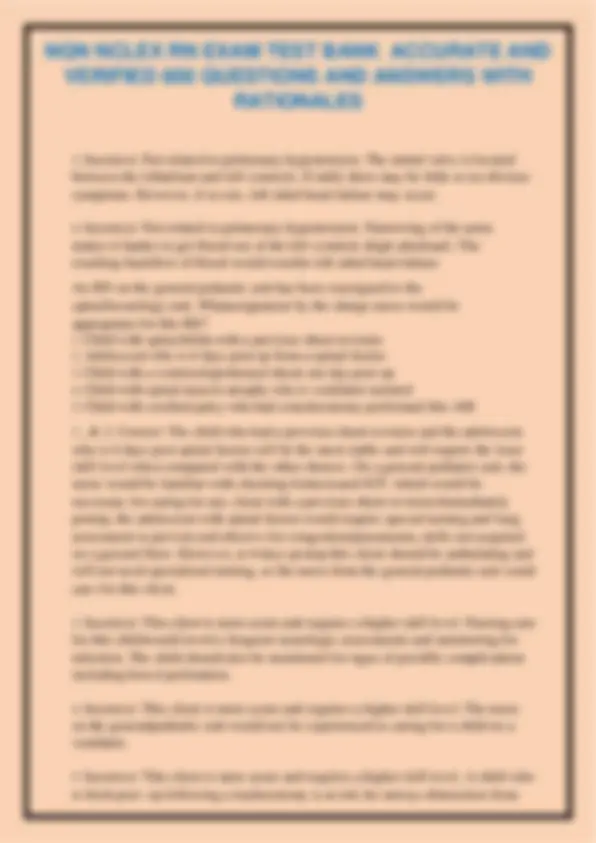
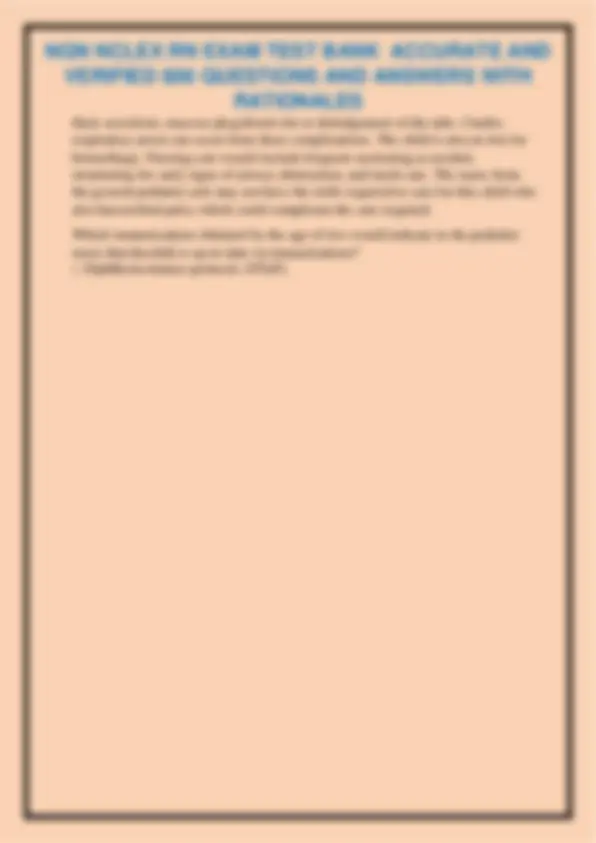
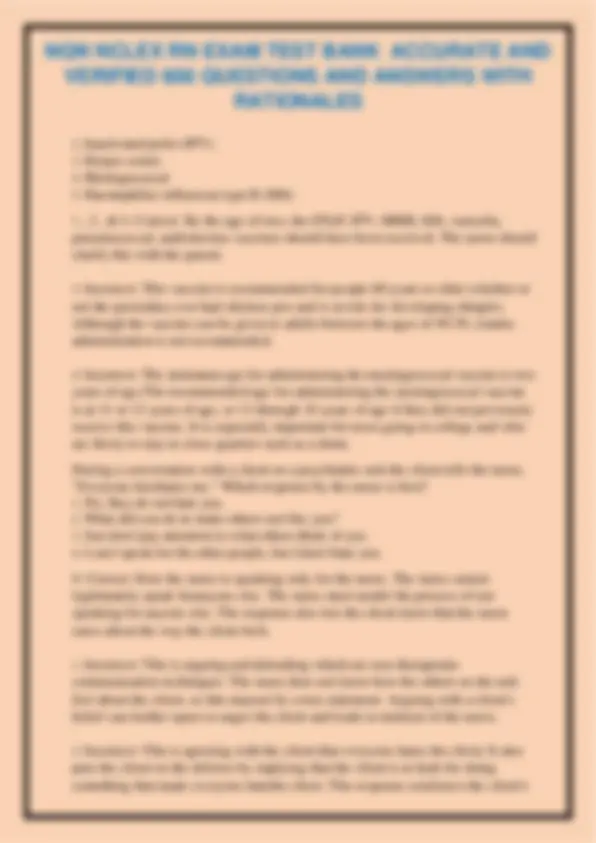
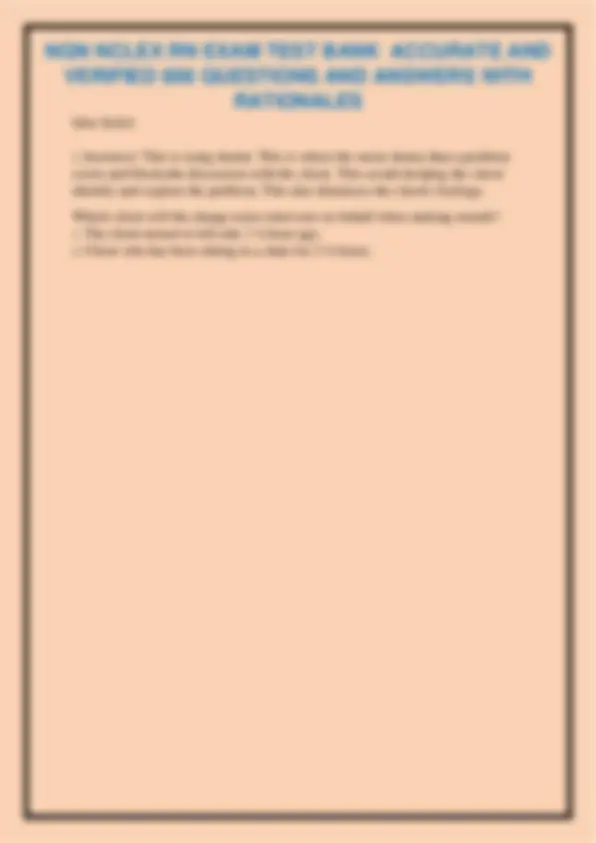
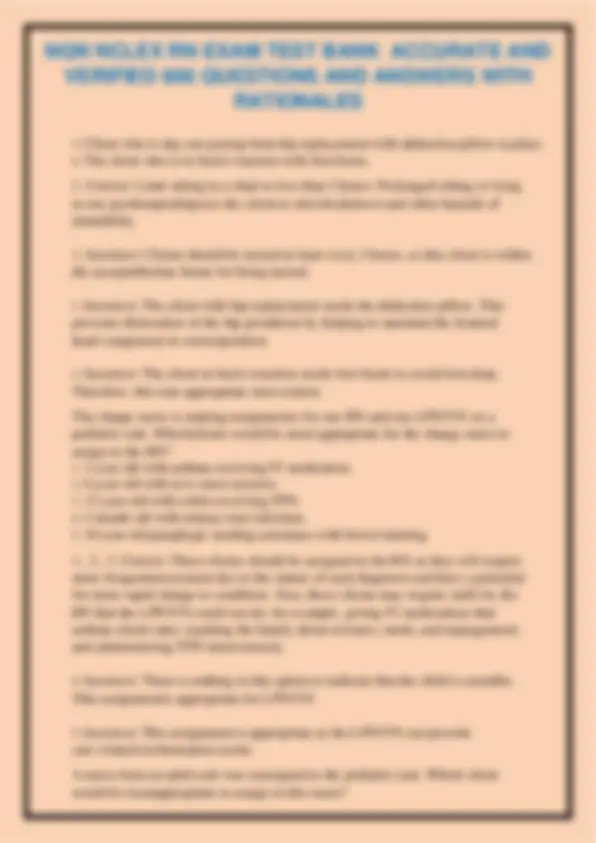
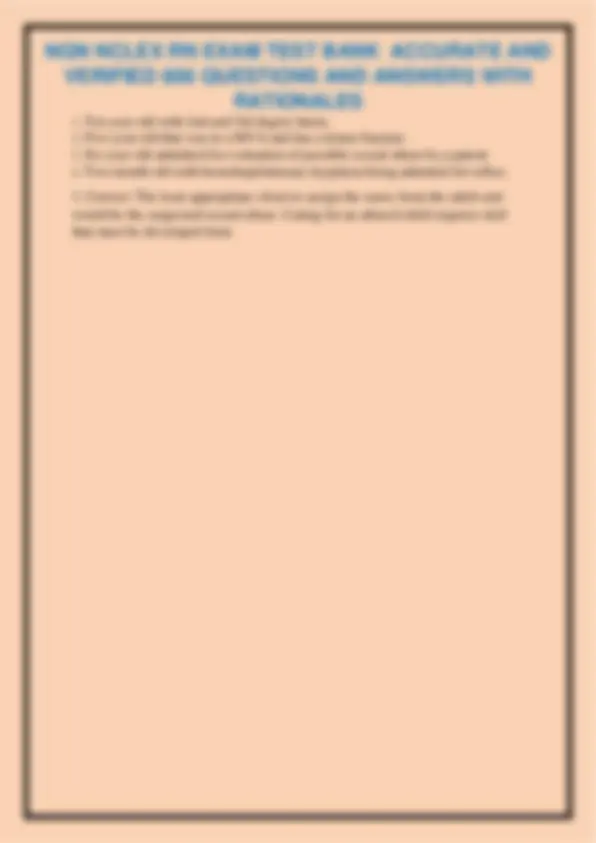
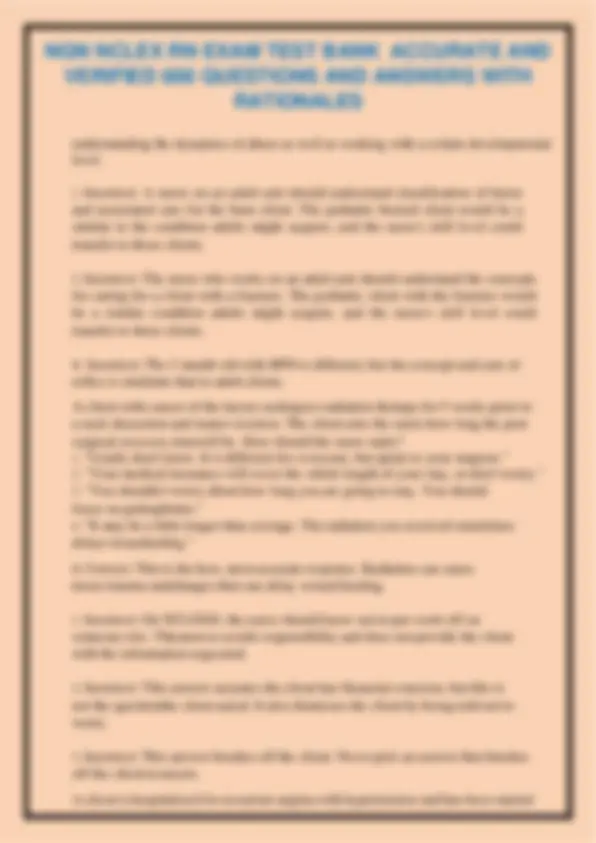


Study with the several resources on Docsity

Earn points by helping other students or get them with a premium plan


Prepare for your exams
Study with the several resources on Docsity

Earn points to download
Earn points by helping other students or get them with a premium plan
Community
Ask the community for help and clear up your study doubts
Discover the best universities in your country according to Docsity users
Free resources
Download our free guides on studying techniques, anxiety management strategies, and thesis advice from Docsity tutors
A collection of multiple-choice questions and answers with rationales, designed to prepare students for the ngn nclex rn exam. It covers various topics related to nursing practice, including child development, medication administration, and client care. The document aims to enhance understanding of nursing concepts and improve test-taking skills.
Typology: Exams
1 / 260

This page cannot be seen from the preview
Don't miss anything!





























































































Which term describes the play activity of the preschool aged child?
A. Cooperative B.Associative C. Parallel D. Solitary B (Associative) (Play of the preschool aged child is described as associative. At this stage, children are more interested in playing with other children than they are with playing with toys. The child may talkto other children and exchange toys or play games without any rules. Answer A describes the play of a school-aged child. Answer C describes the play of an infant.) The nurse is ready to begin an exam on a nine-month-old infant who is sitting quietly on hismother's lap. Which should the nurse do first?
A. Check the Babinski reflex B. Listen to the heart and lung sounds C. Palpate the abdomen D. Check tympanic membranes B (Listen to the heart and lung sounds) (While the infant is quiet, the nurse should begin the exam by listening to the heart and lungs. Ifthe nurse elicits the Babinski reflex , palpates the abdomen, or checks the tympanic membranes,the infant may cry and it will be difficult to adequately listen to the heart and lungs; therefore answers A,C, and D are incorrect.) In terms of cognitive development, a three-year-old would be expected to:
A. Think abstractly B. Use magical thinking C. Understand conservation of matter D. See things from the perspective of others
B (Use magical thinking)
(A three-year-old is expected to use magical thinking, such as believing that a toy bear is a real bear. Answers A, C, and D are incorrect because of abstract thinking, conservation of matter, andthe ability to look at things from the perspective of others are cognitive abilities of an older child) Which of the following describes the language development of a two-year-old?
A. Doesn't understand yes and no B. Understands the meaning of all words C. Can combine three or four words D. Repeatedly asks "why?" C (can combine three or four words) (The two year old can combine three to four words. Answers A and B are incorrect because thetwo-year-old understands yes and no, but does not understand the meaning of all the words. Answer D is incorrect because seeking information and asking "why?" is typical of the three-year old) A client who has been receiving Urokinase (uPA) for deep vein thrombosis is noted to have darkbrown urine in the urine collection bag. Which action should the nurse take immediately?
A. Prepare an injection of vitamin K B. Irrigate the urinary catheter with 50 mL of normal saline C. Offer the client additional oral fluids D. Withhold the medication and notify the physician
D (Withhold the medication and notify the physician) (Urokinase is a thrombolytic agent used in the treatment of deep vein thrombosis, pulmonary embolus, or myocardial infarction. The presence of dark brown or rust-colored urine suggests bleeding. The nurse should withhold the medication, call the doctor immediately, and prepare toadminister Amicar. Answer A is correct because vitamin K is not the antidote for urokinase. Answers B and C are incorrect because they do not address the adverse
problem of bleeding)Which of the following can occur with the frequent use of
calcium based antacids?
A. Constipation
A client with a renal failure is prescribed a low potassium diet. Which food choice would be bestfor this client?
A.1 cup beef broth B.1 baked potato C. 1/2 cup raisins D.1 cup rice D (1 cup of rice) ( Answer D is correct because one cup of rice is considered a low-potassium food. The foods inanswer A, B, and C are incorrect because they contain higher amounts of potassium) An appropriate nursing intervention for the client with borderline personality disorder is:
A. Observing the client for signs of depression or suicidal thinking B.Allowing the client to lead unit group sessions C. Restricting the client's activity to the assigned unit of care throughout hospitalization D. Allowing the client to select a primary caregiver
A (observing the client for signs of depression or suicidal thinking) (Clients with borderline personality frequently suffer from depression and suicidal thinking and should be assessed for risk of self-injury. Answers B and D are incorrect choices because they allow the client too much control of the therapeutic environment. Answer C is incorrect becausethe client's activities do not have to be restricted to the unit after the level of depression has beendetermined )
Which of the following is an expected finding in the assessment of a client with bulimia nervosa
A. Extreme weight loss B.Presence of lanugo over body C. Erosion of tooth enamel D. Muscle wasting
C (Erosion of tooth enamel) (Erosion of tooth enamel caused by frequent self-induced vomiting is an expected finding in aclient with bulimia nervosa. Answers A, B, and D are expected findings in the client with anorexia nervosa; therefore, they are incorrect.)
Assuming that all have achieved normal cognitive and emotional development, which of thefollowing children is at greatest risk for accidental poisoning?
A. One-year-old B.Four-year-old C. Eight-year-old D. Twelve-year-old
action should be to:
A. Report the findings to the physician B.Recheck the vital signs in one hour C. Ask the patient if he is in pain D. Compare the current vital signs with those on admission A (Report the findings to the physician)
(The client is exhibiting a widened pulse pressure, tachycardia, tachypnea. The first nursing action after obtaining these vital signs is to notify the physician for additional orders. Answers B,C, and D can be done after the physician is notified; therefore, they are incorrect choices as a first action.) The nurse is preparing s client with an axillopopliteal bypass graft for discharge. The clientshould be taught to avoid:
A. Using a recliner to rest B.Resting in supine position C. Sitting in a straight chair D. Sleeping in right Sim's position
C (Sitting in a straight chair) (The client with the axillo-popliteal graft should avoid activities that can occlude the femoral artery graft. Sitting in the straight chair and wearing tight clothes are prohibited for this reason. Answers A, B, and D are incorrect because resting in a supine position, resting in a recliner, andsleeping in the right Sim's position are allowed.) The doctor has ordered antithrombotic stockings to be applied to the legs of a client with peripheral vascular disease. The nurse knows the antithrombotic stockings should be applied:
A. Before the client arises in the morning B.With the client in a standing position C. After the client has bathed and applied lotion to the legs D. Before the client retires in the evening
A (Before the client arises in the morning) (The best time to apply antithrombotic stockings to the client is in the morning before the clientarises. If the physician orders them later in the day, the client should return to bed, wait 30 minutes, and apply the stockings. Answers B, C, and D are incorrect because there is likely )
The nurse has just received the change of shift report and is preparing to make rounds. Whichclient should the nurse assess first?
A. A client recovering from a stroke with an oxygen saturation rate of 99% B.A client three days port-coronary artery bypass graft with an oral
A. Hypothyroidism B.Diabetic ulcers C. Gastroenteritis D. Bacterial pneumonia
A (Hypothyroidism) The nurse is teaching the client regarding use of sodium warfarin. Which statement made by theclient would require further teaching?
A."I will have blood drawn every month." B."I will assess my skin for rash." C."I take aspirin for a headache." D."I will use an electric razor to shave." C ("I take aspirin for a headache.") The client returns to the recovery room following repair of an abdominal aneurysm. Whichfinding would require further investigation?
A. Pedal pulses regular B.Urinary output 20mL in the past hour C. Blood pressure 108/ D. Oxygen saturation 97%
B (Urinary output 20mL in the past hour) The nurse is doing bowel and bladder retraining for the client with paraplegia. Which of thefollowing is not a factor for the nurse to consider?
A. Diet pattern B.Mobility C. Fluid intake D. Sexual function
D (Sexual function) The primary healthcare provider has prescribed phenytoin 100 mg intravenous push (IVP) statfor an adult client. What is the least amount of time that the nurse can safely administer this medication?
What should a nurse teach family members prior to them entering the room of a client who hasagranulocytosis?
protective environments such aswhen immunocompromised clients require protection from potential infectious agents outside ofthe room.
A healthy newborn has just been delivered and placed in the care of the nurse. What nursingactions should the nurse initiate?
Place in the correct priority order.
Assess newborn's airway and
breathing.
Bulb suction excessive mucus.Assess newborn's heart rate. Place identification bands on newborn and mom. Administer sterile ophthalmic ointment containing 0.5% erythromycin. Remember Maslow's hierarchy of needs will guide your assessment. First, Assess newborn's airway and breathing. The most critical change that a newborn must make physiologically is the initiation of breathing. The nurse should assess the newborn's crying. If the cry is weak, it may indicate a respiratory disturbance. Other signs of respiratory compromise may include: stridor, grunting, retractions, apnea or diminished breath sounds. Normal respiration are 30 - 60 breaths aminute.
Second, Bulb suction excessive mucus. It is important to assure that the throat and nose are keptclean of secretions to prevent respiratory distress.
Third, Assess newborn's heart rate. If there is no respiratory distress, the nurse continues theassessment by checking the heart rate and other vital signs.
Fourth, Place identification bands on newborn and mom. These are critical for ensuring babies and moms will be appropriately matched at all times but does not take priority over respirationand circulation.
Fifth, Administer sterile ophthalmic ointment containing 0.5% erythromycin. This is a legally required prophylactic eye treatment to prevent Neisseria gonorrhea. However, this would neverbe a priority over Maslow's hierarchy of needs. What information should a nurse include when educating a client regarding buccaladministration of a medication?